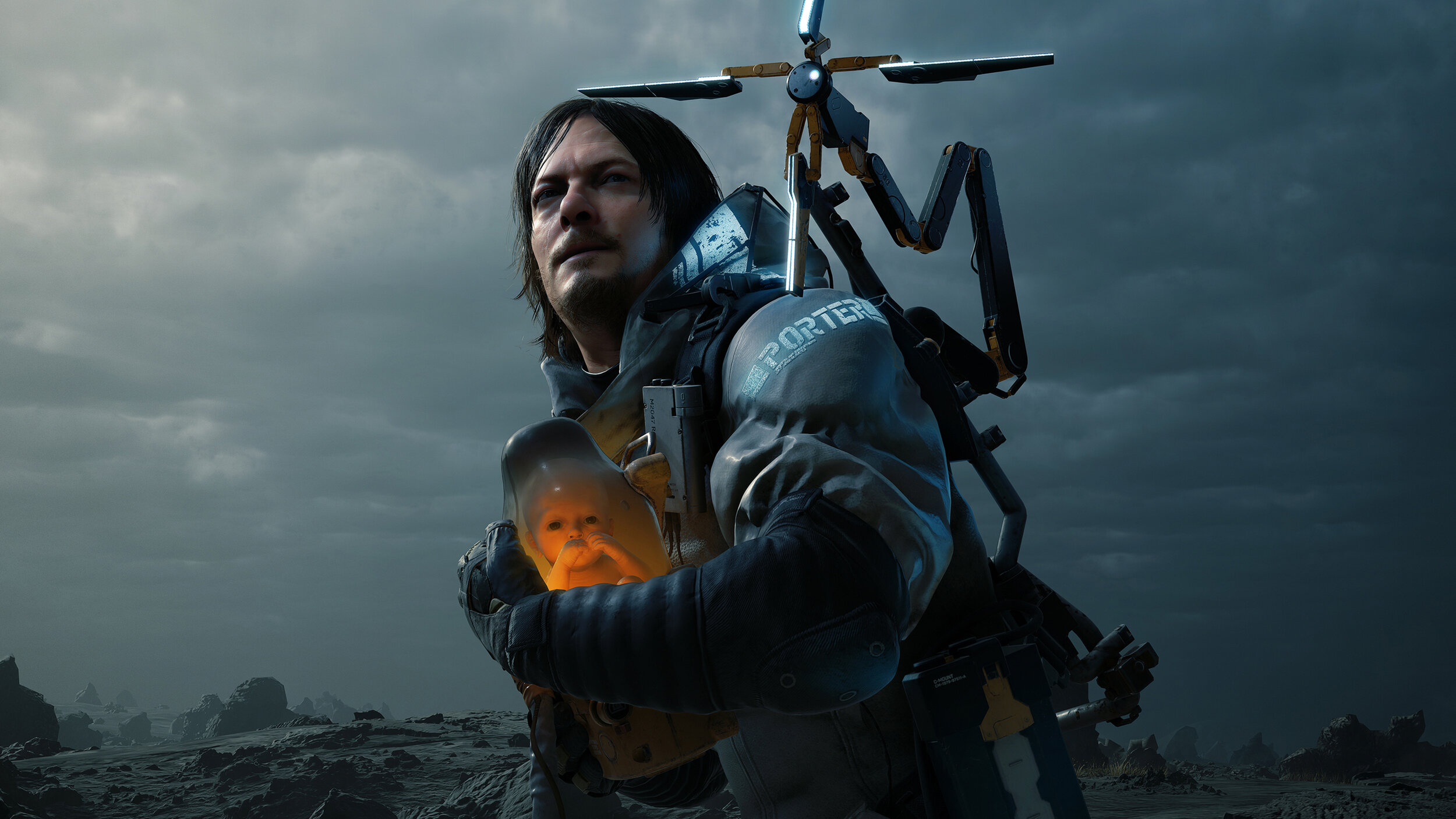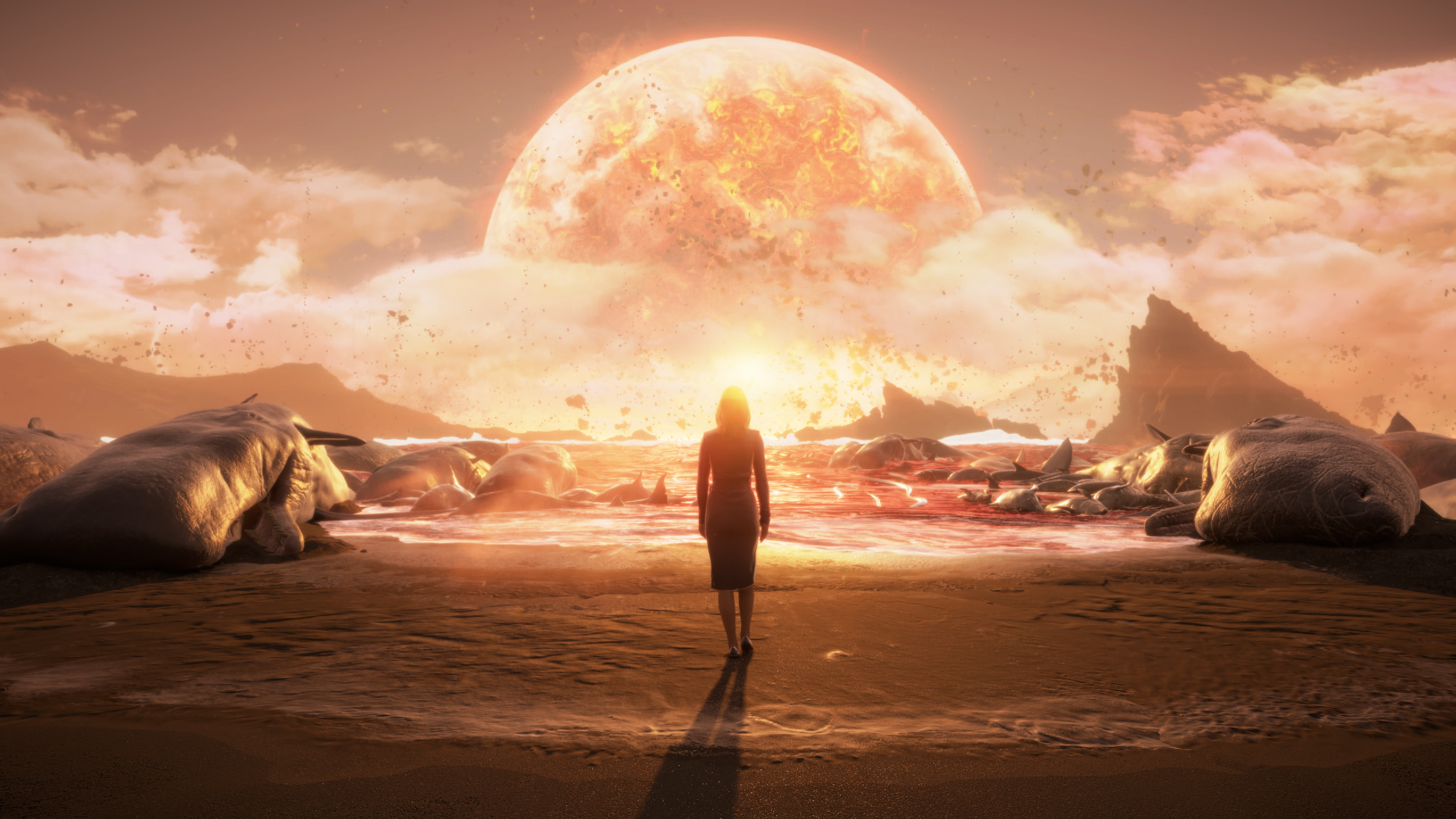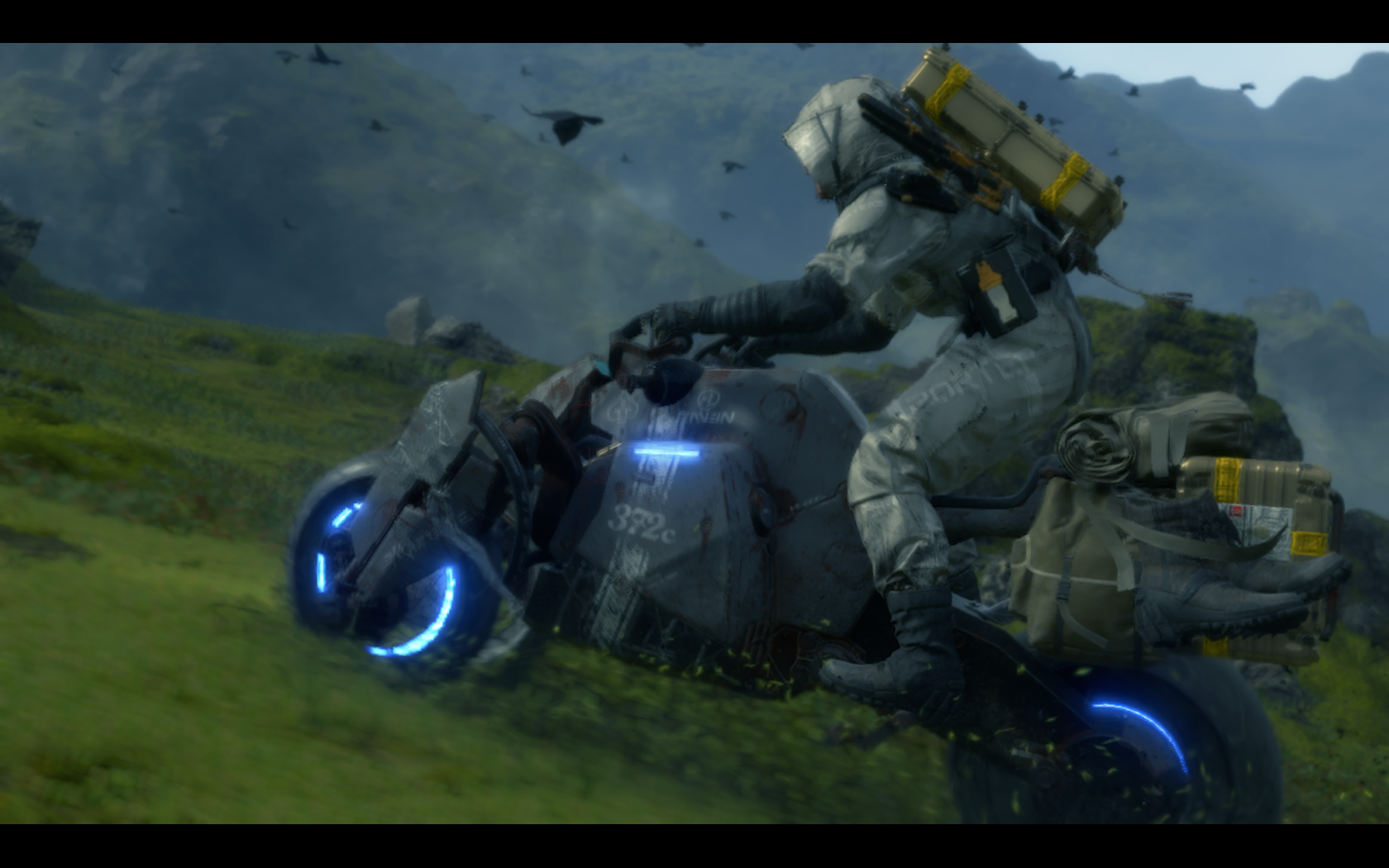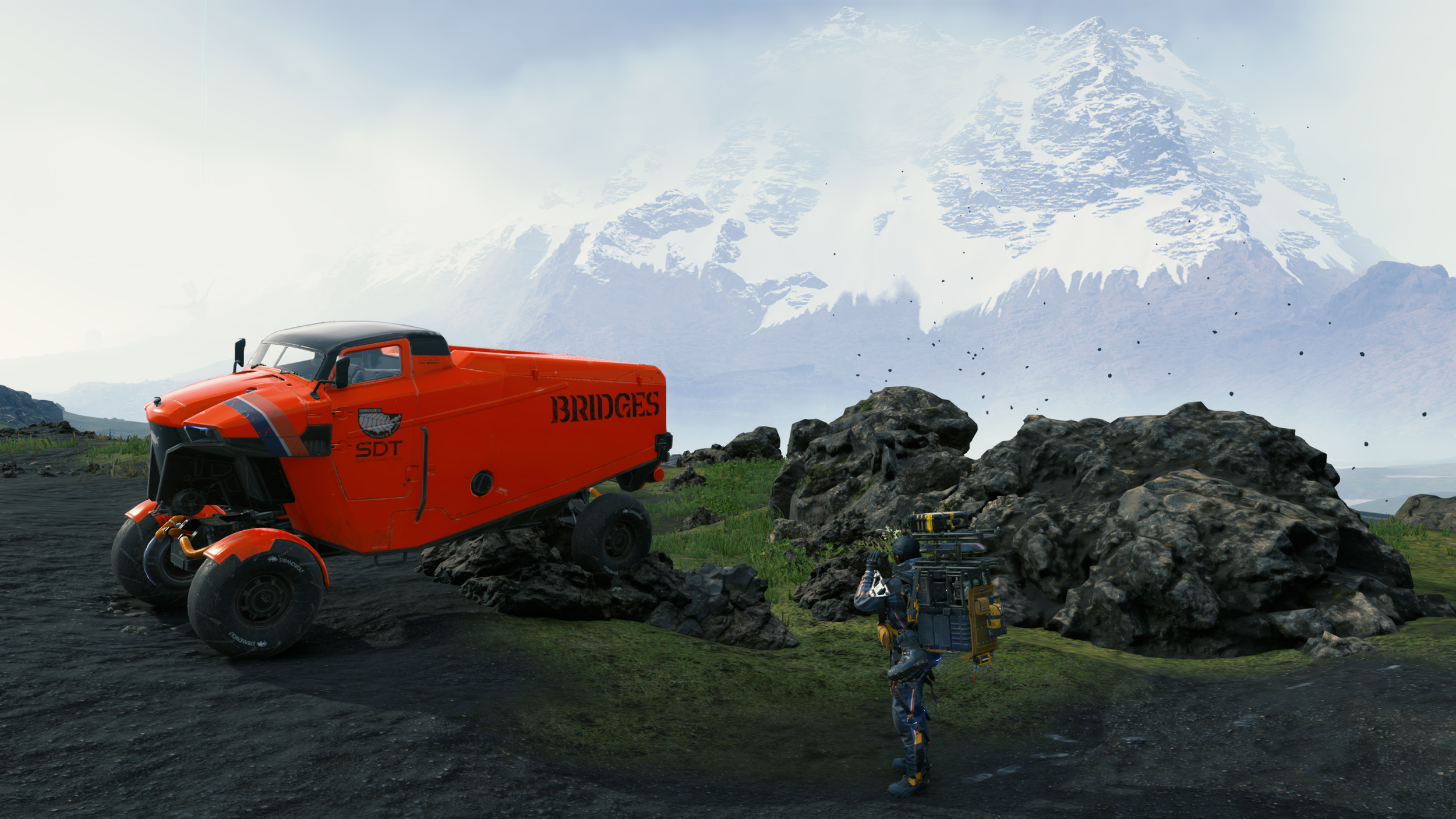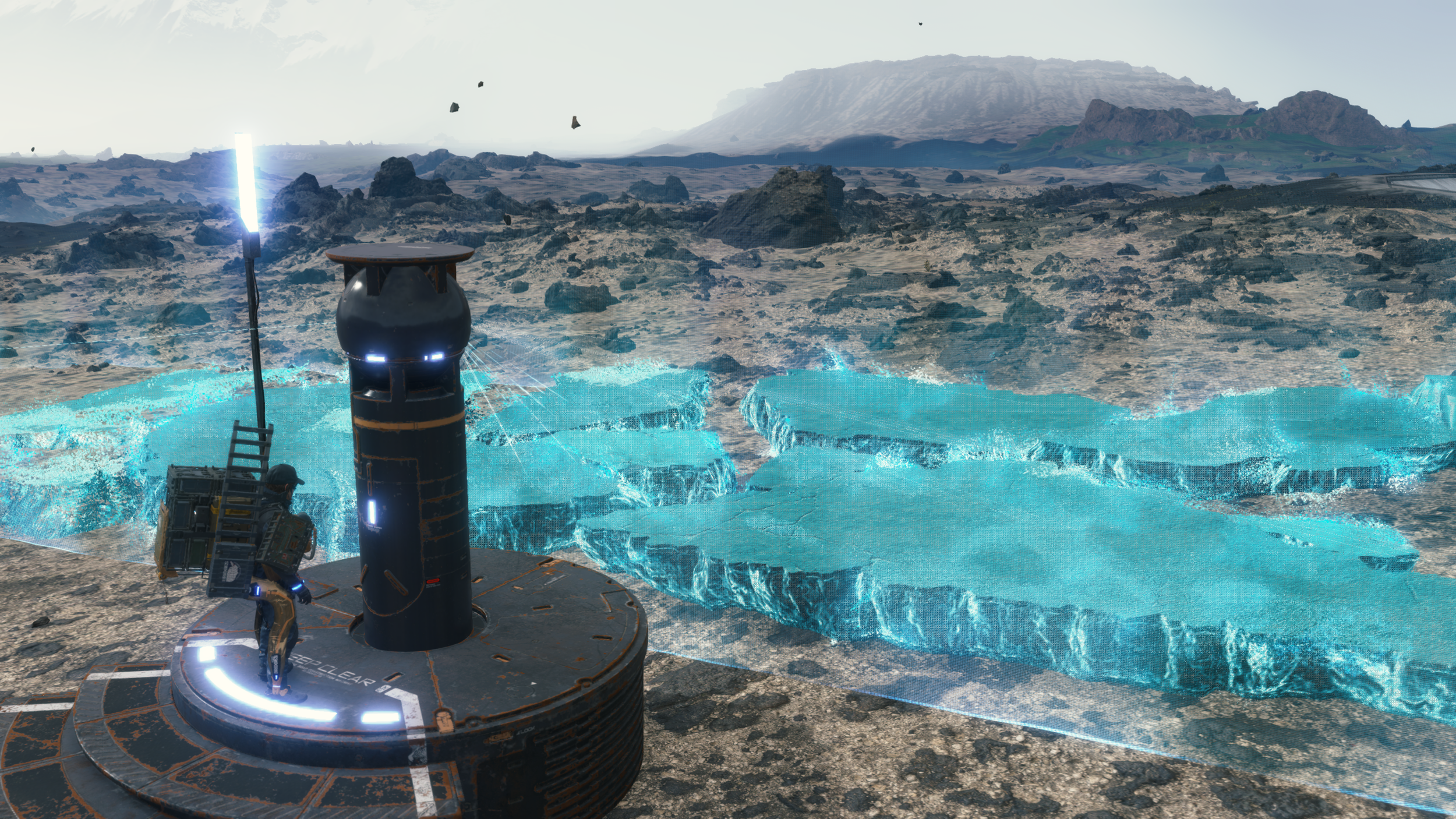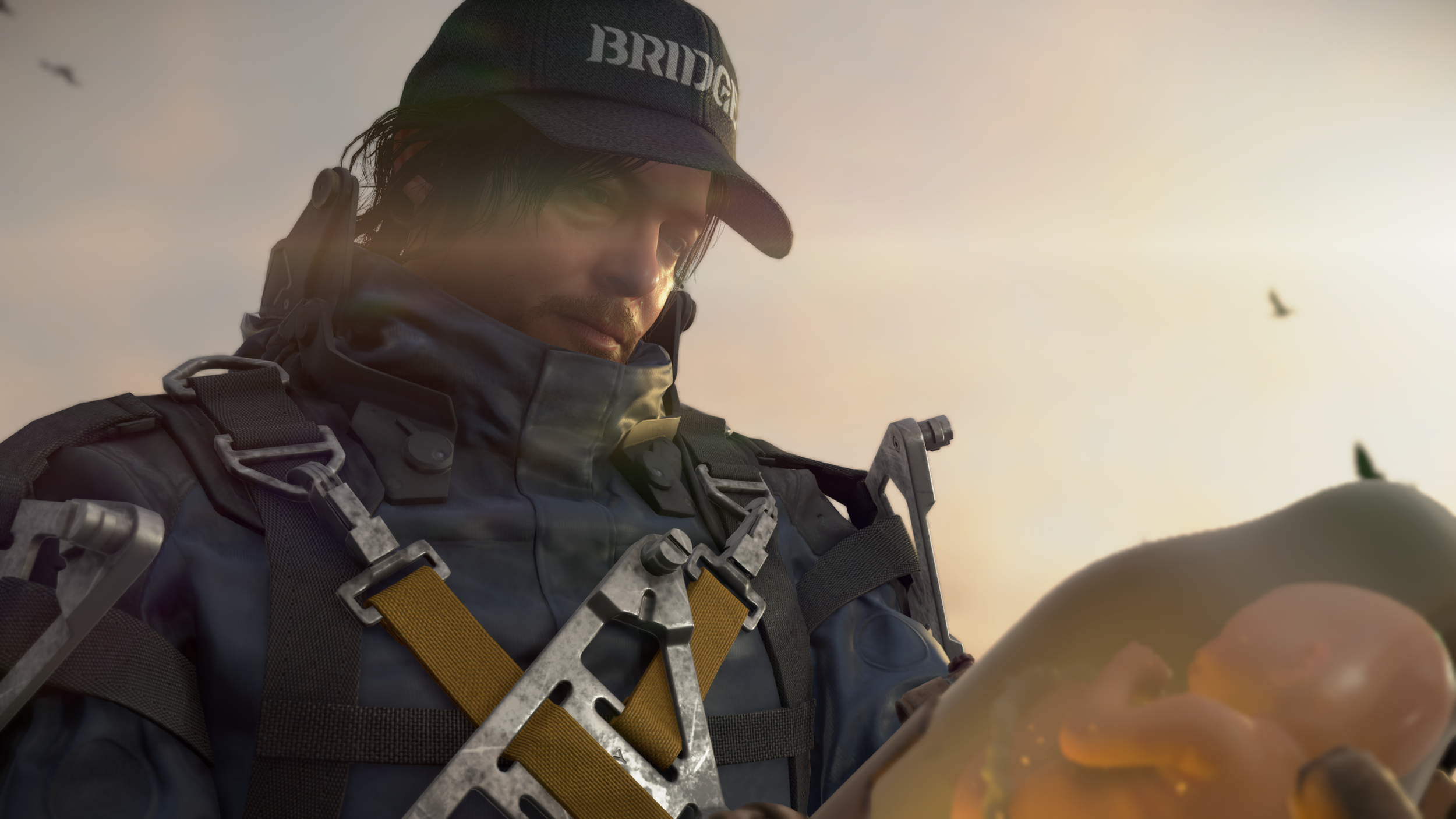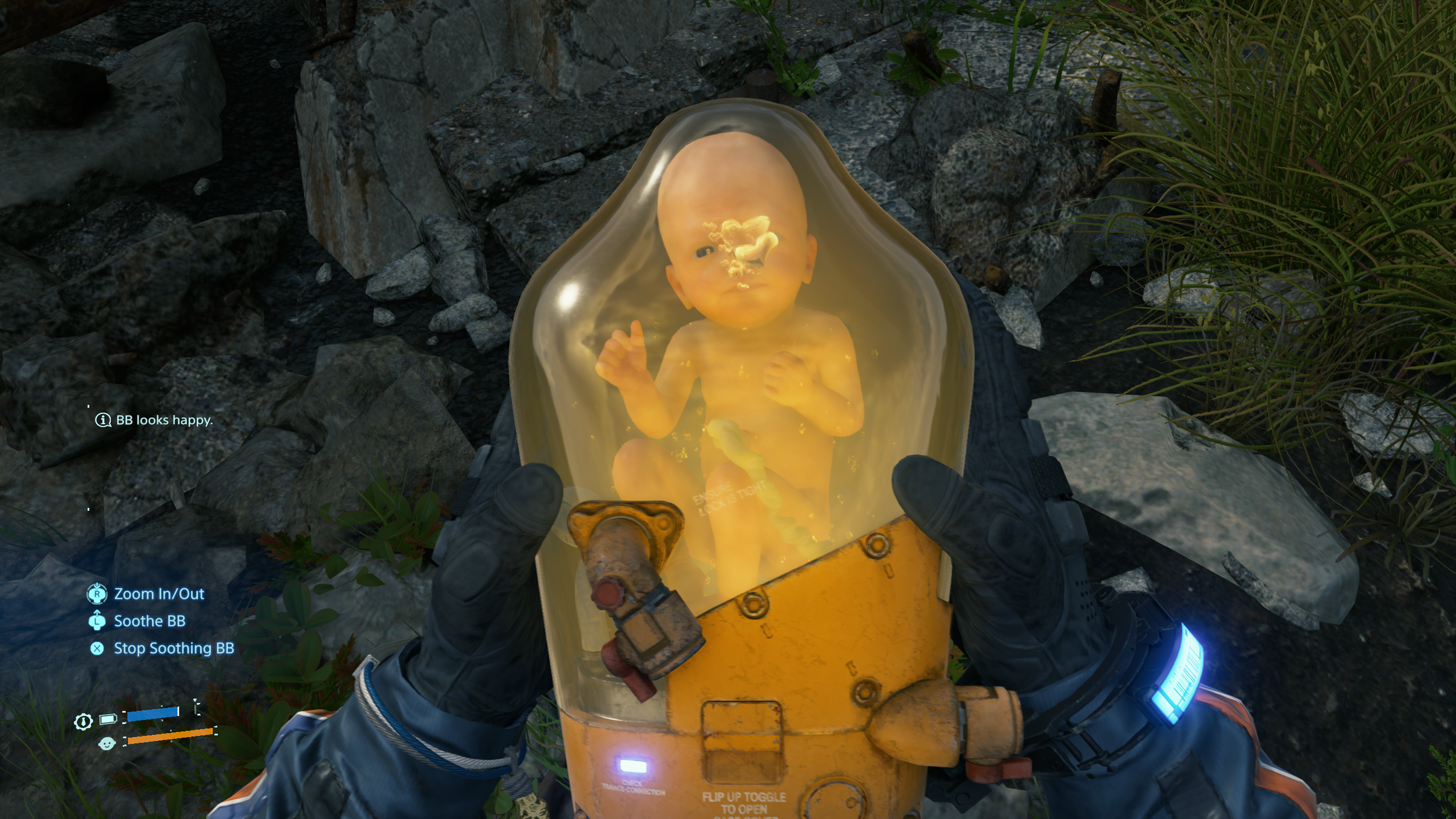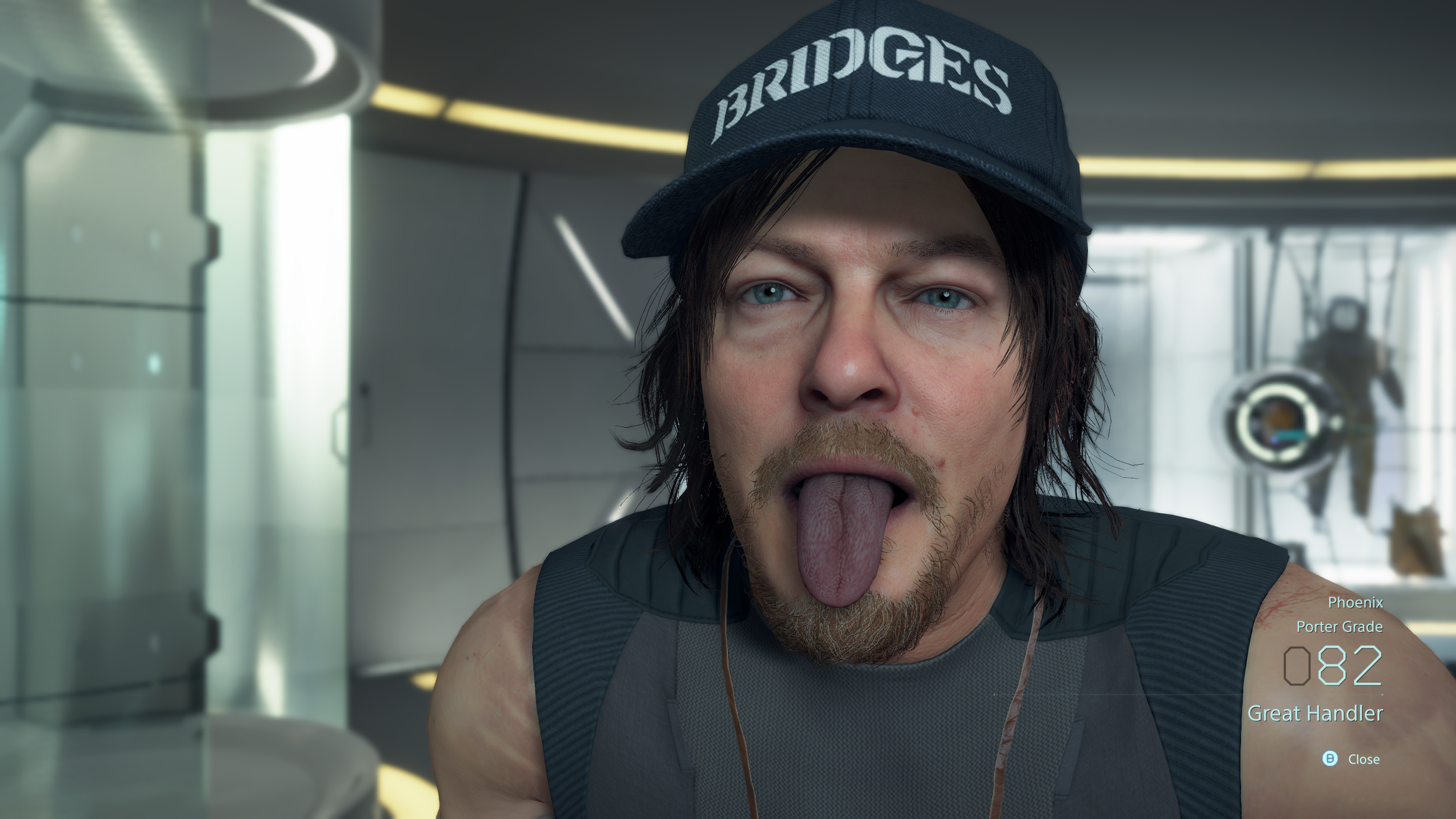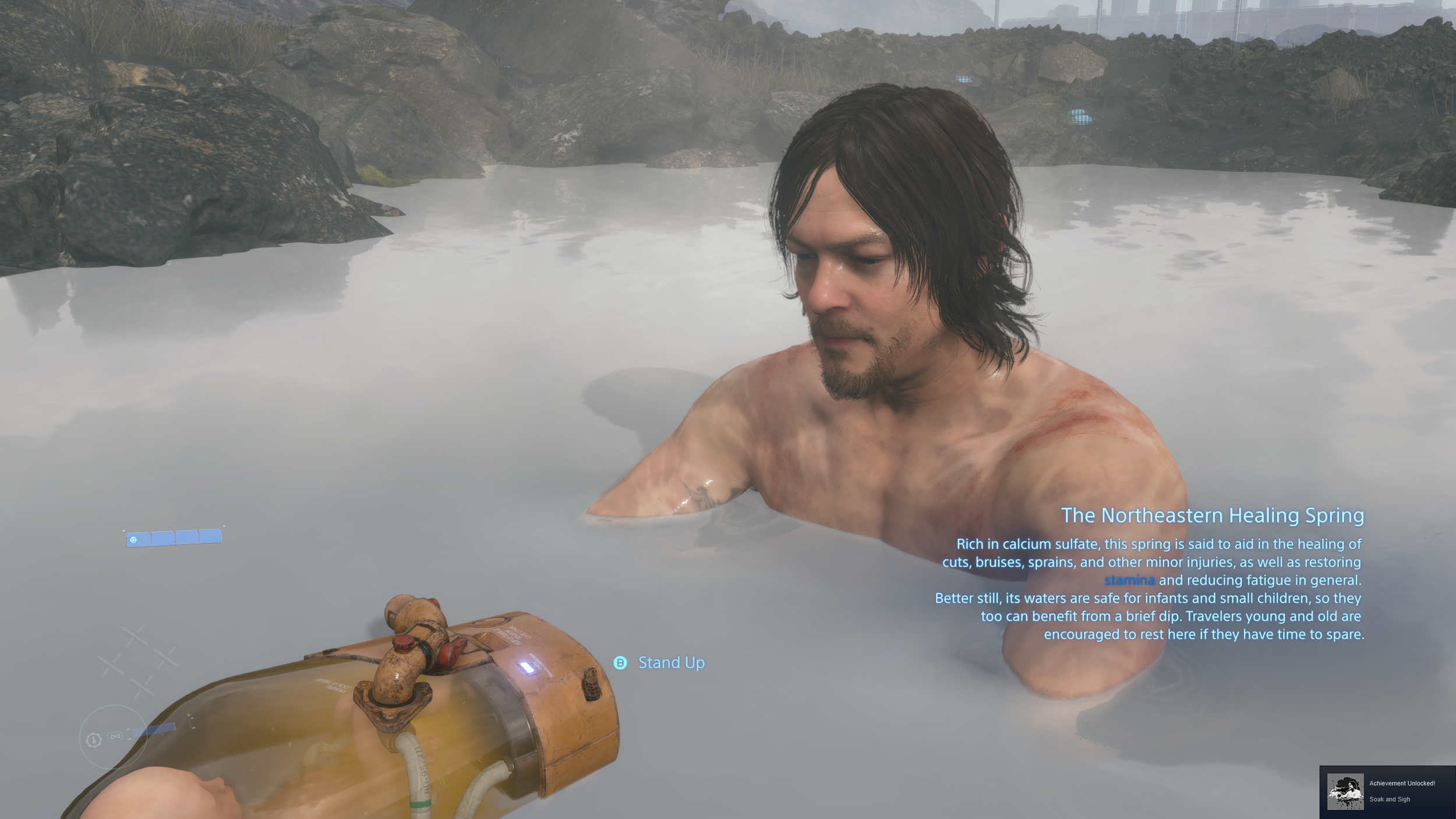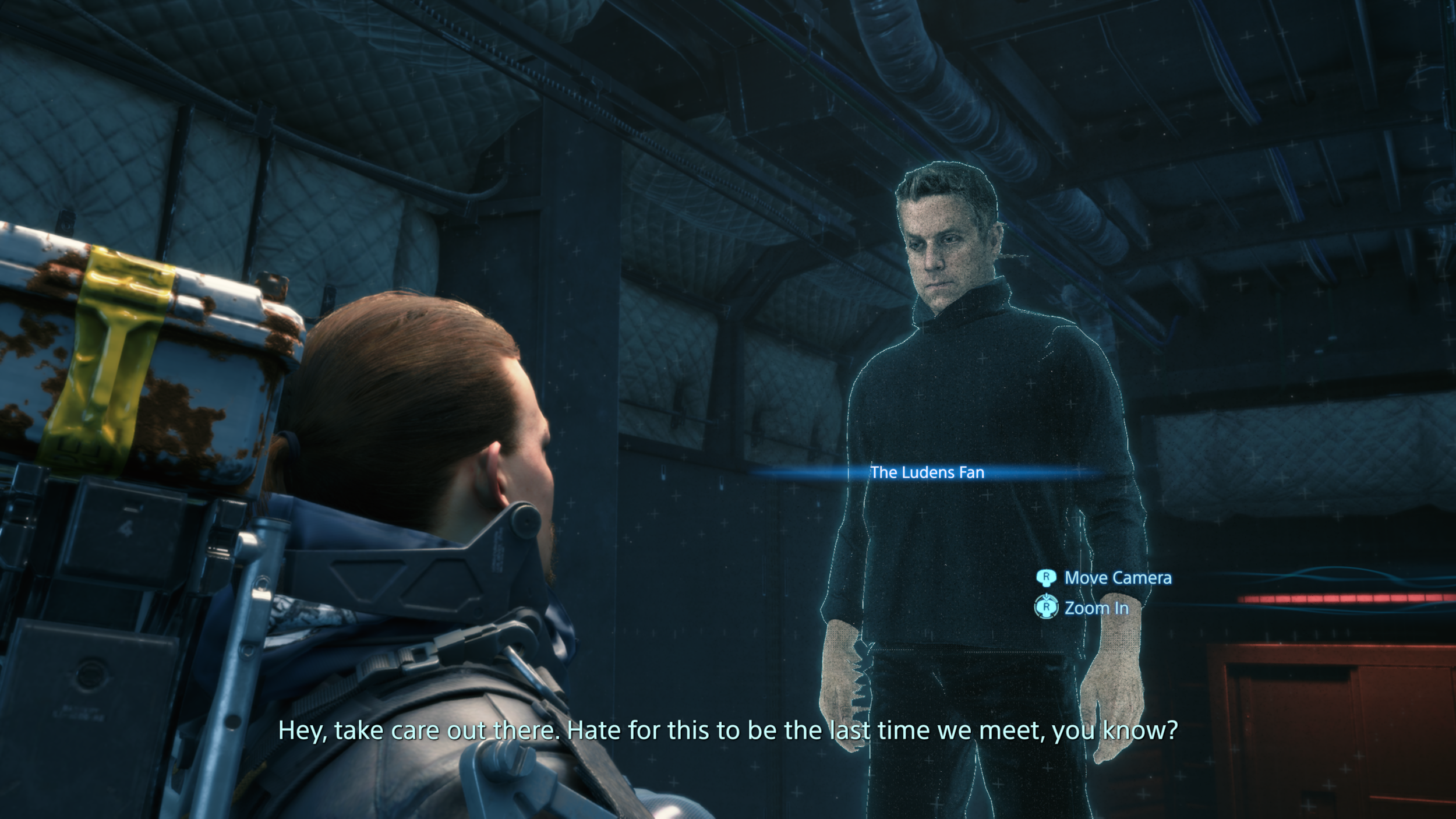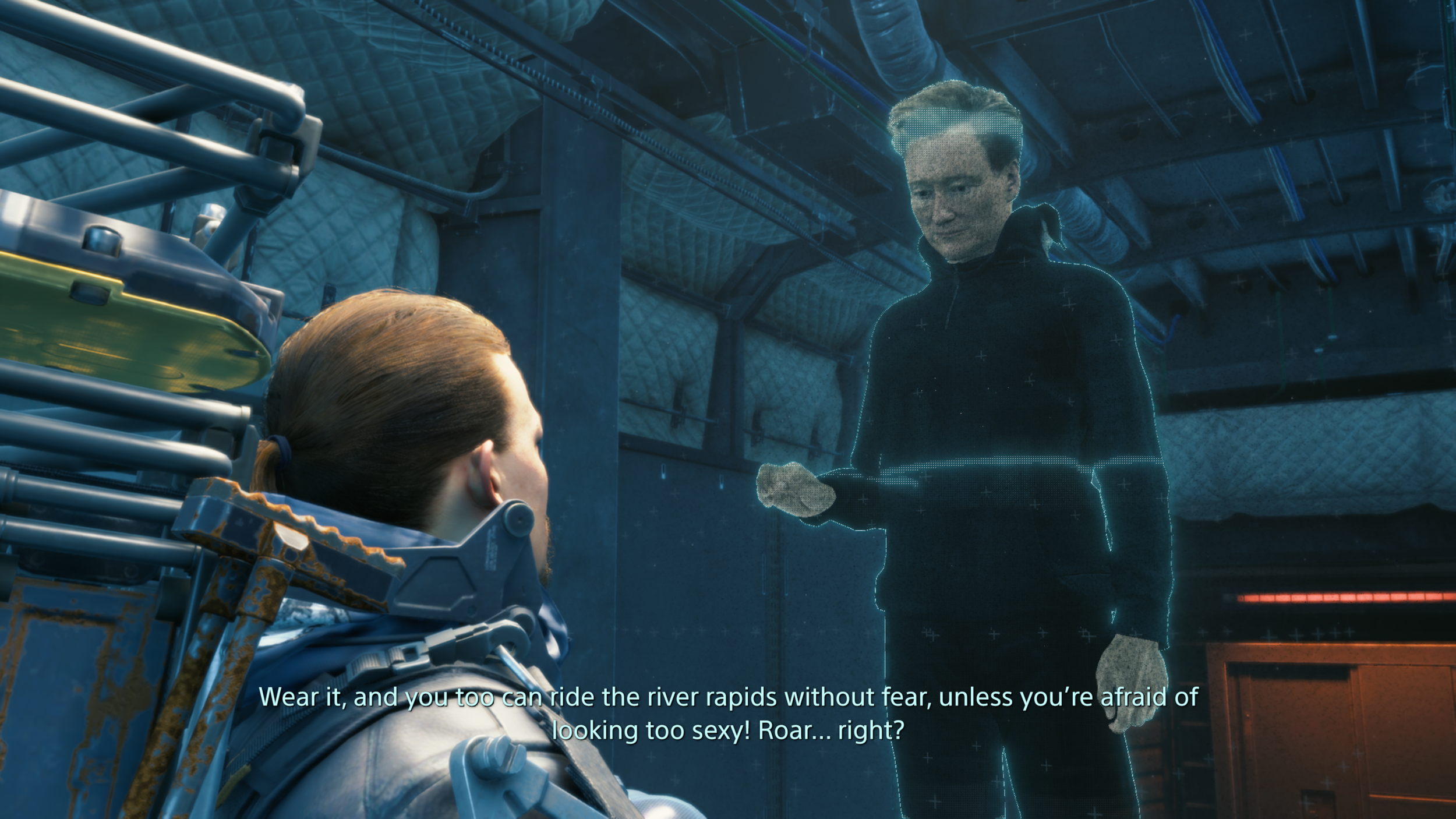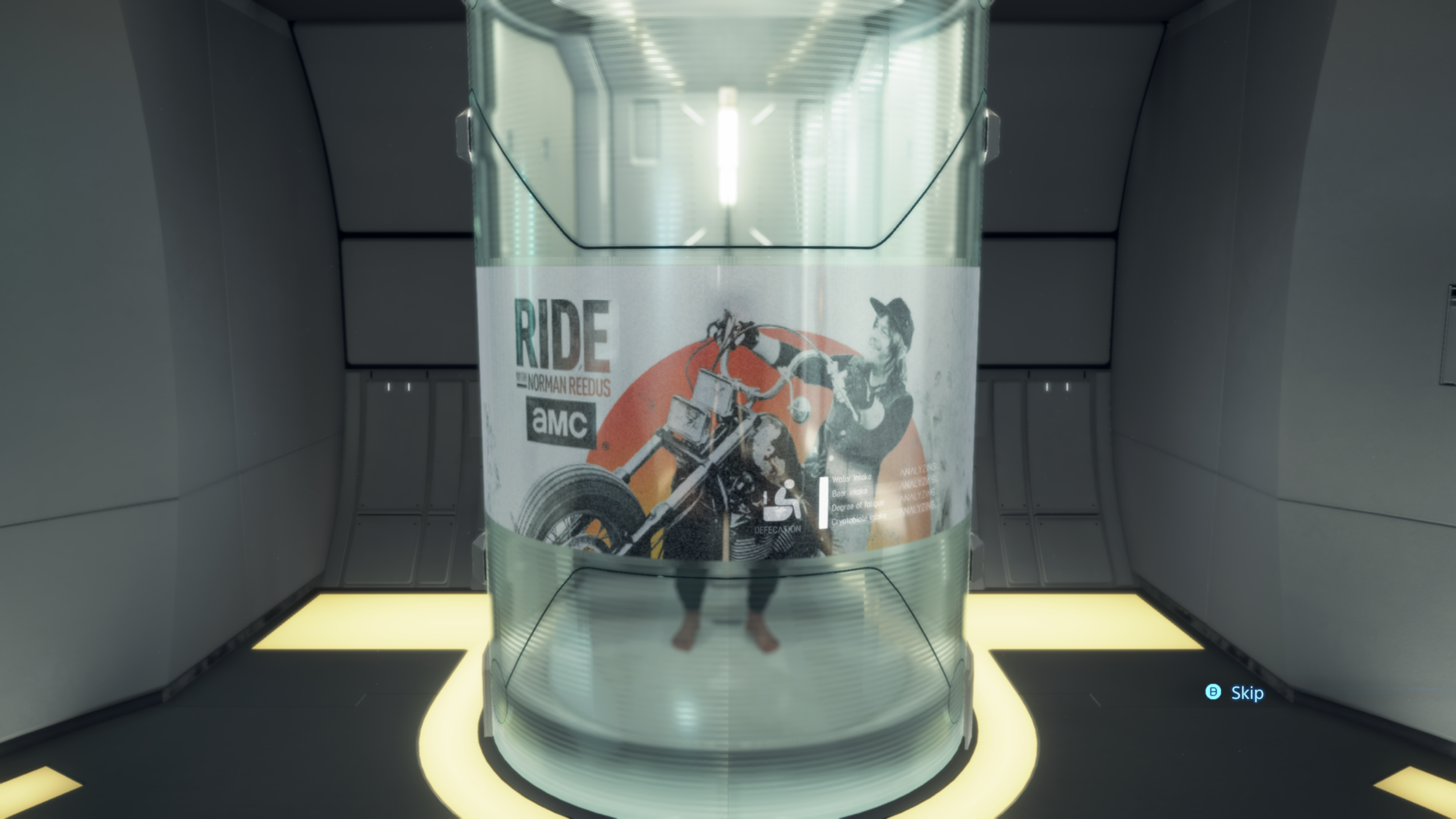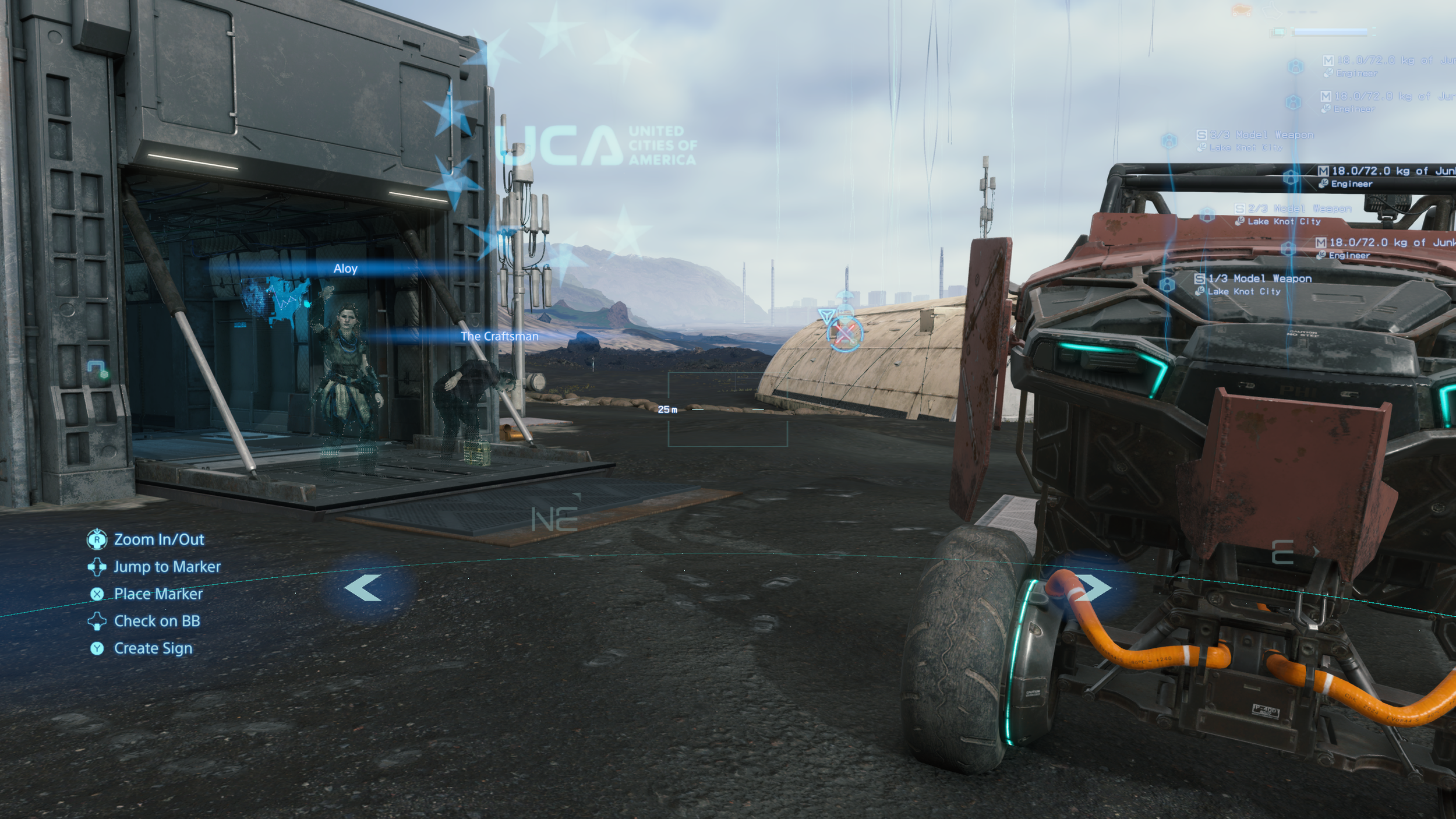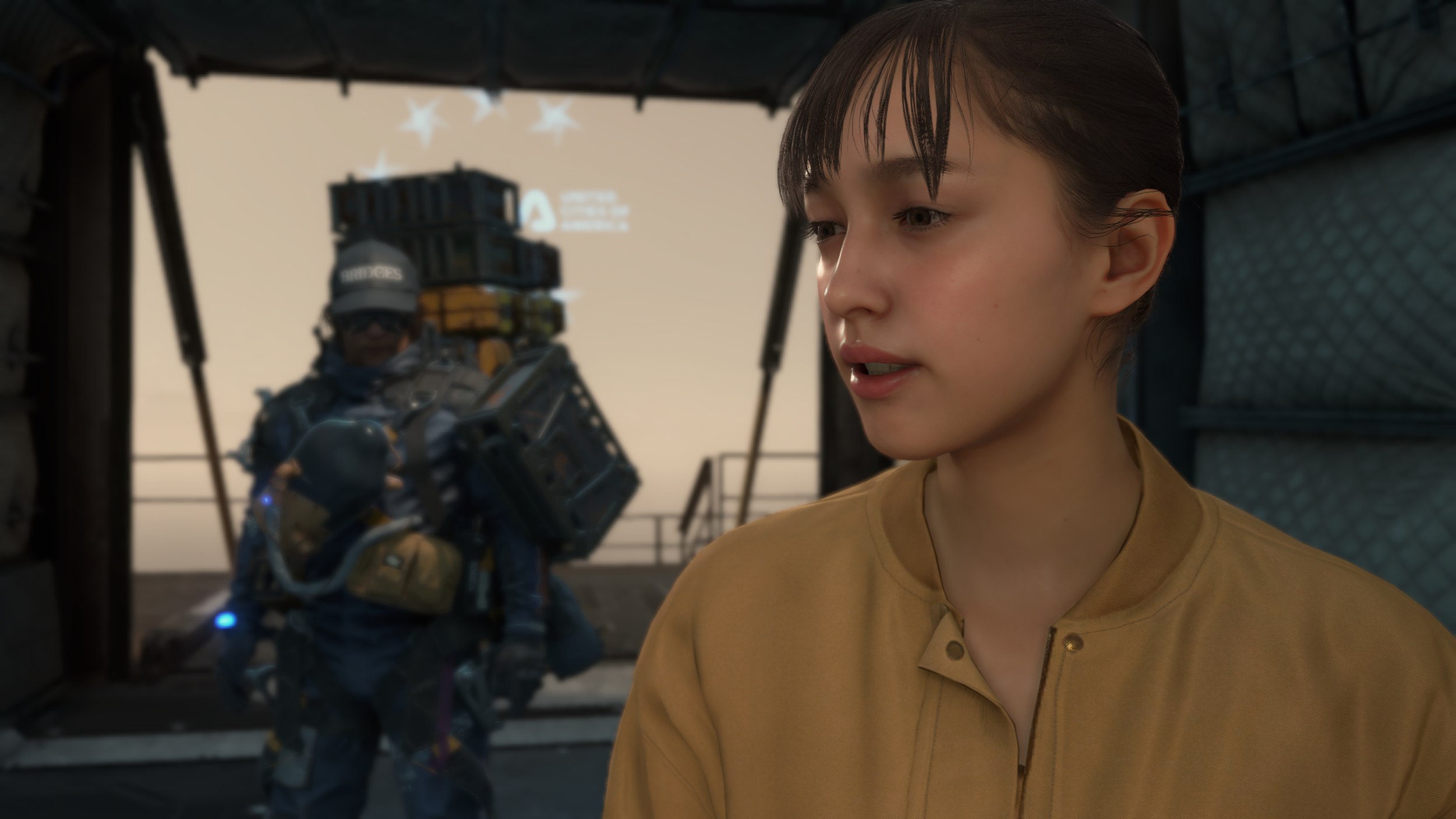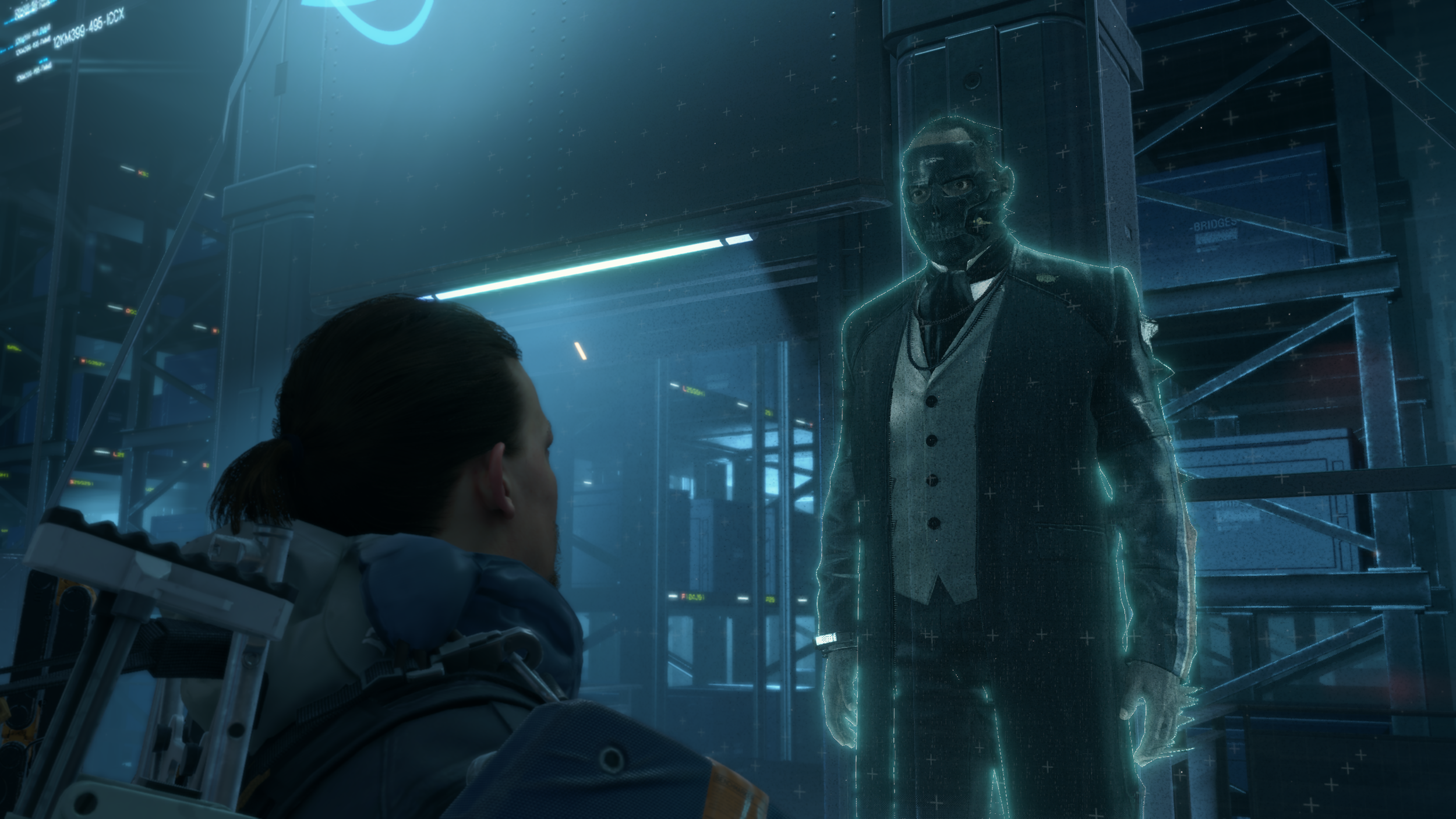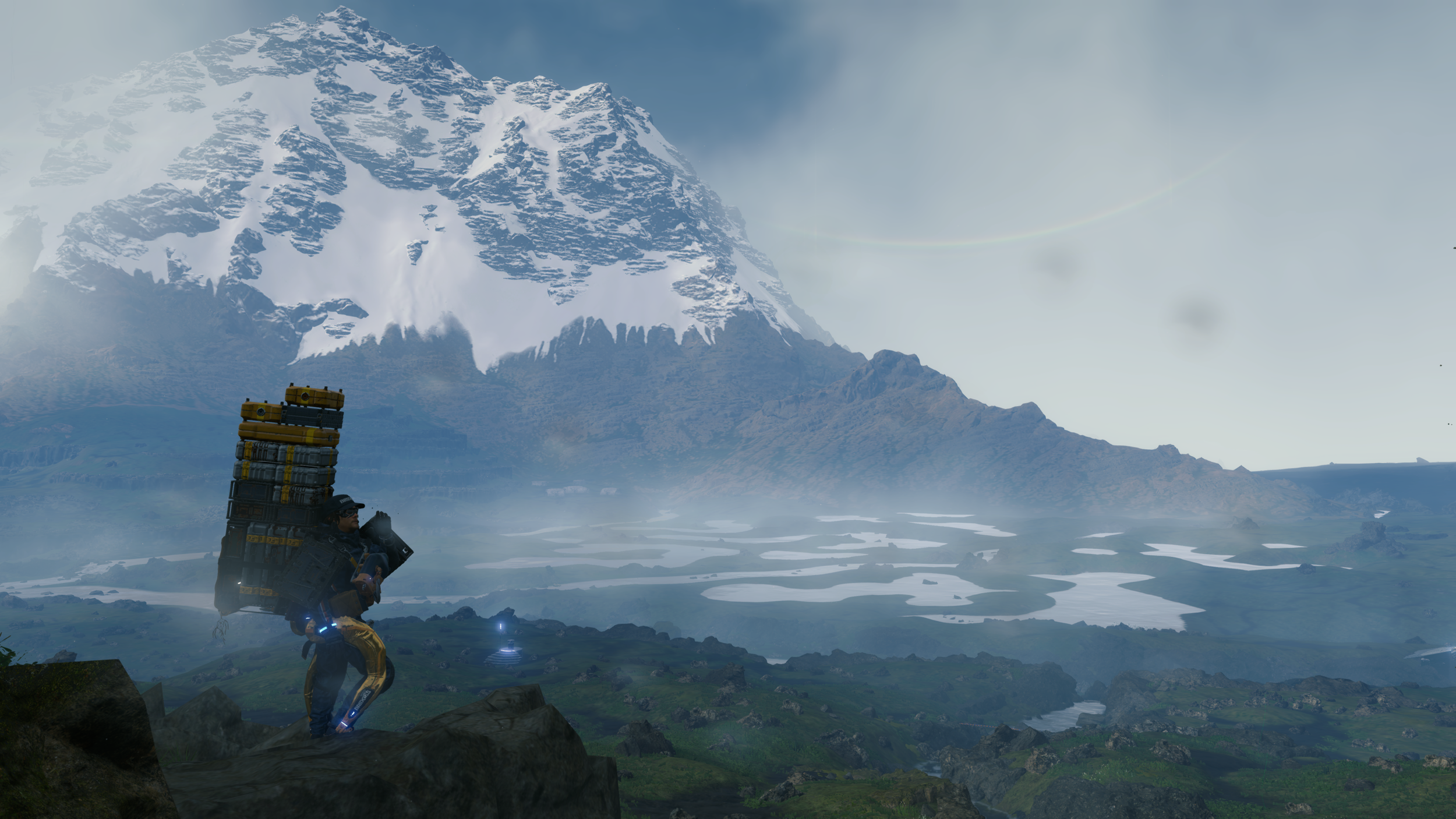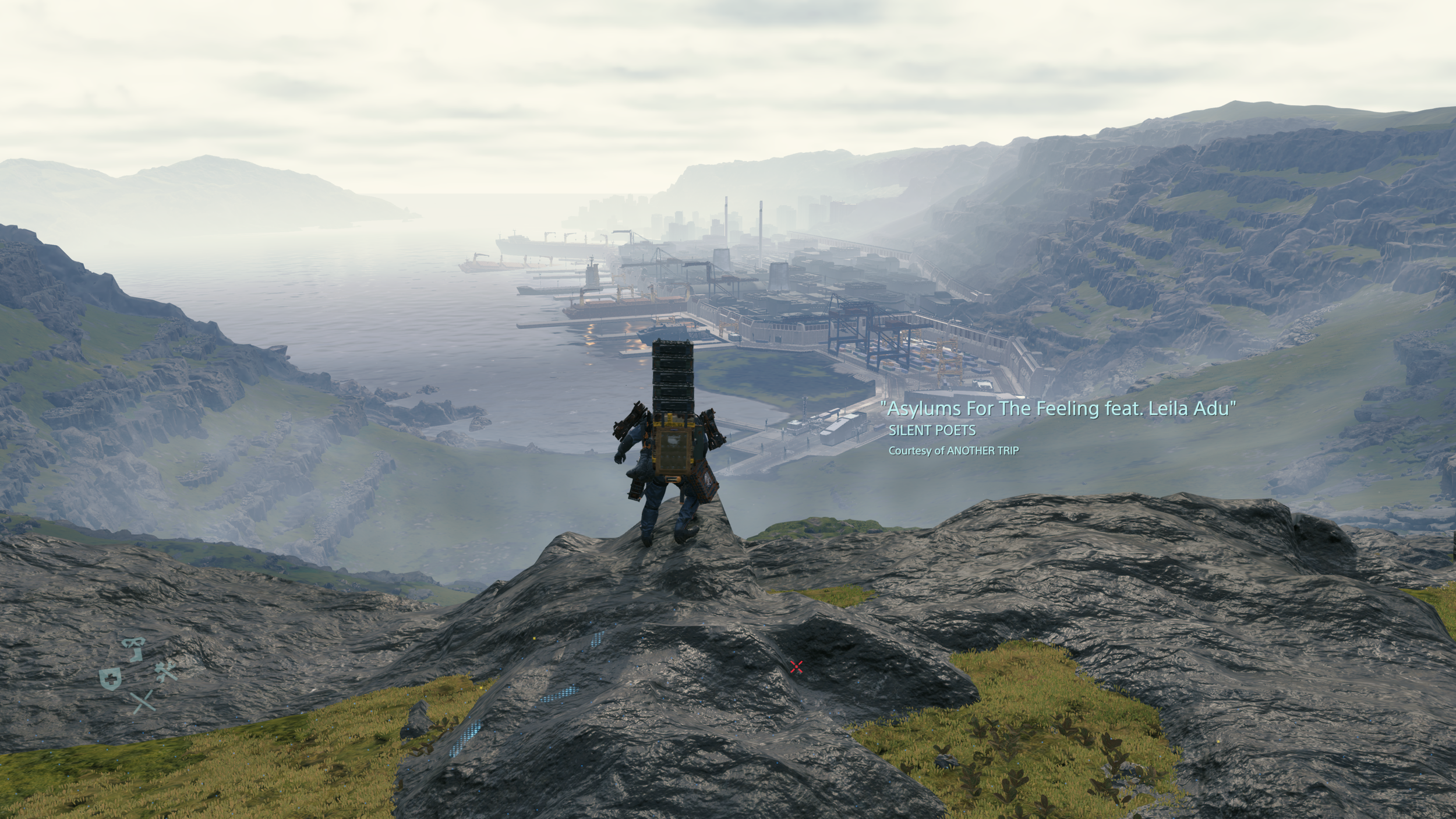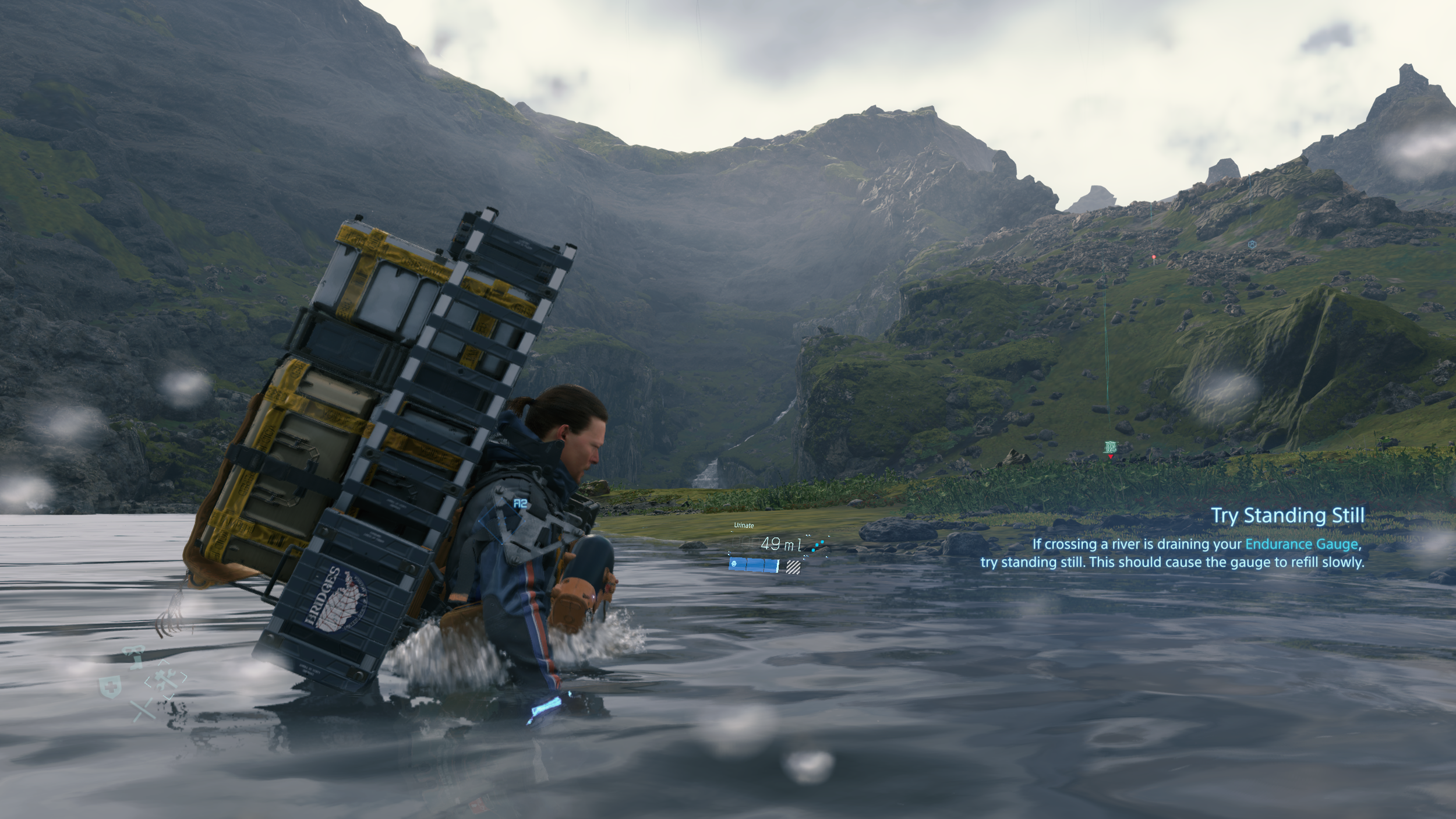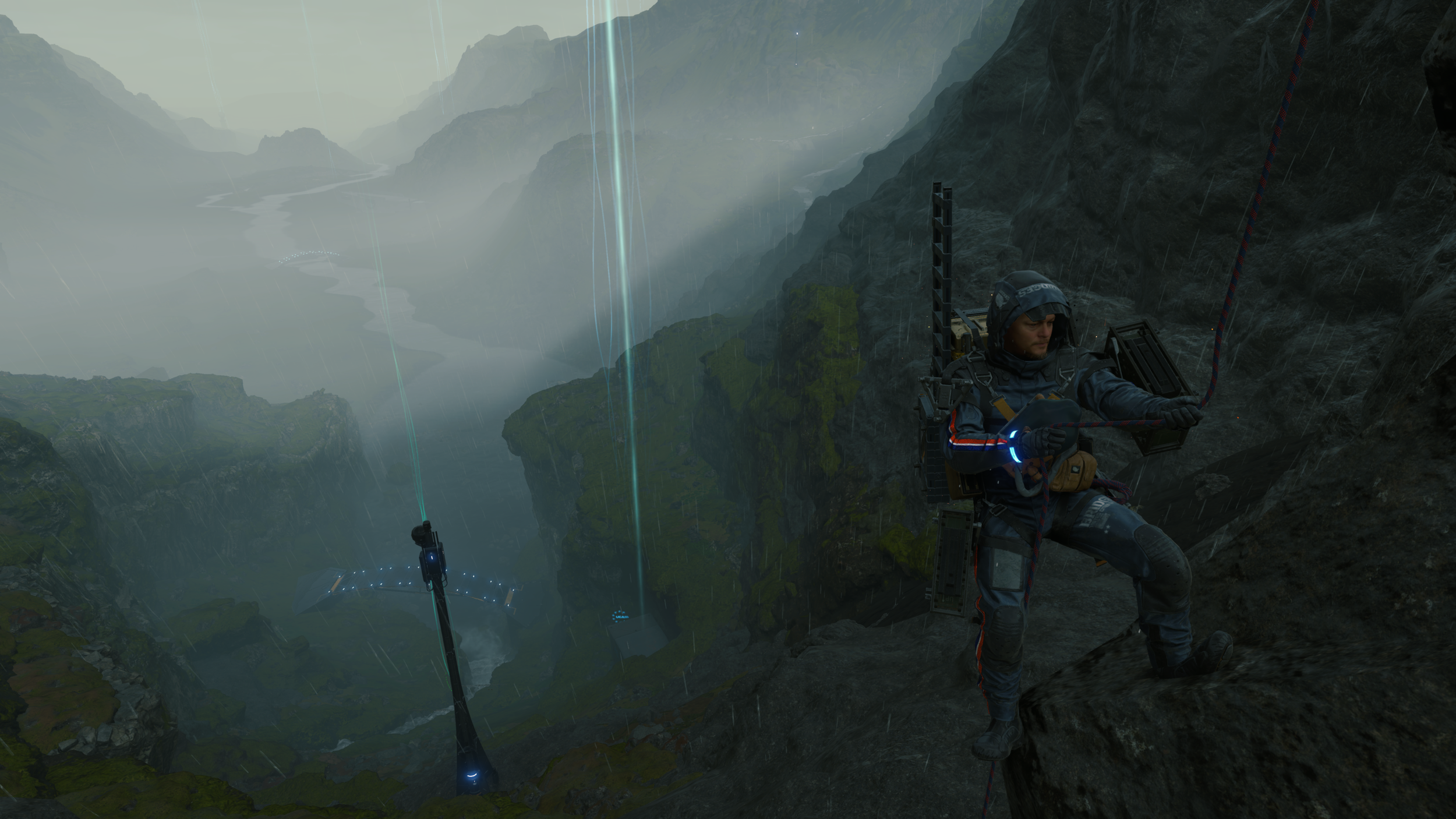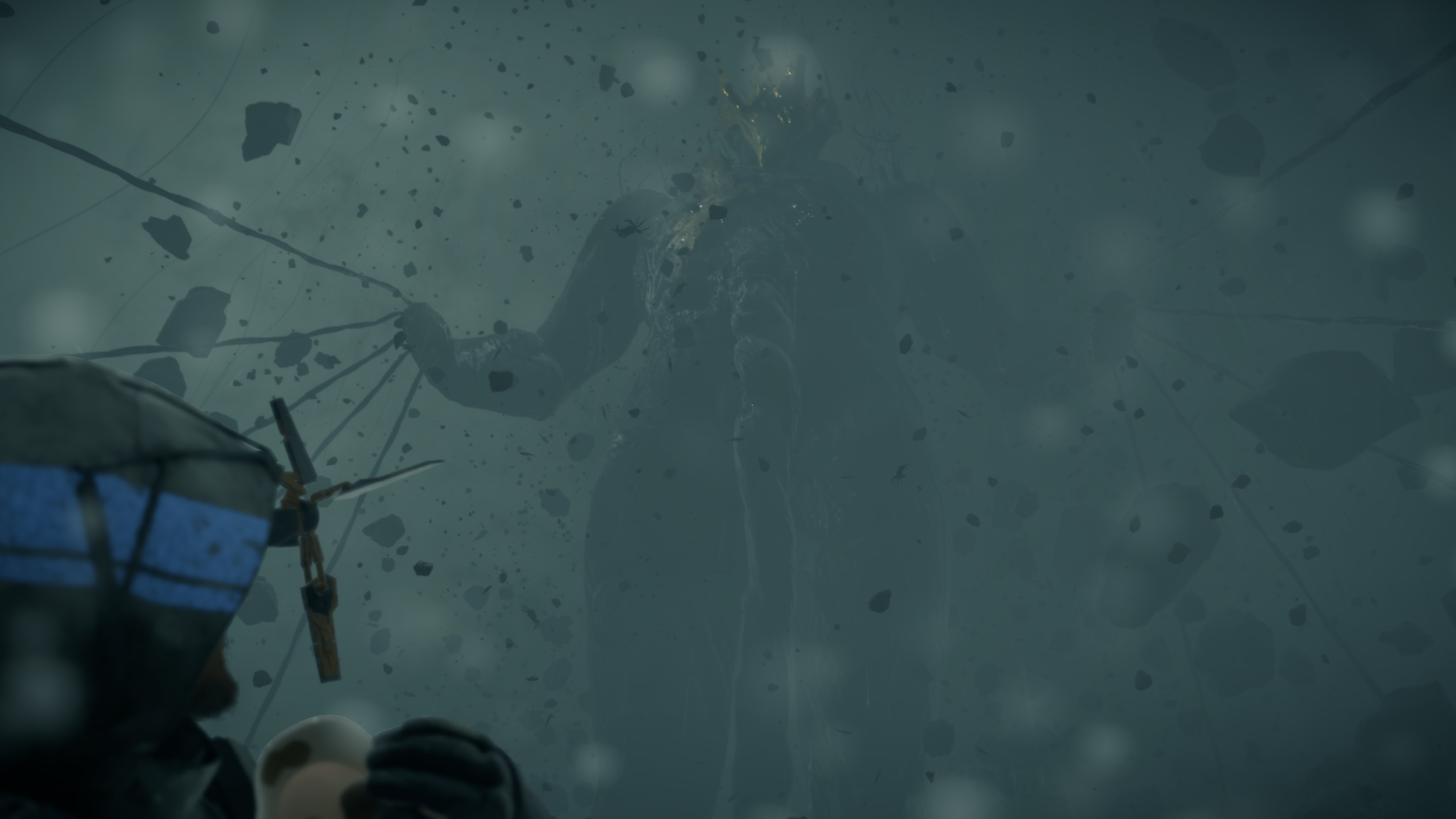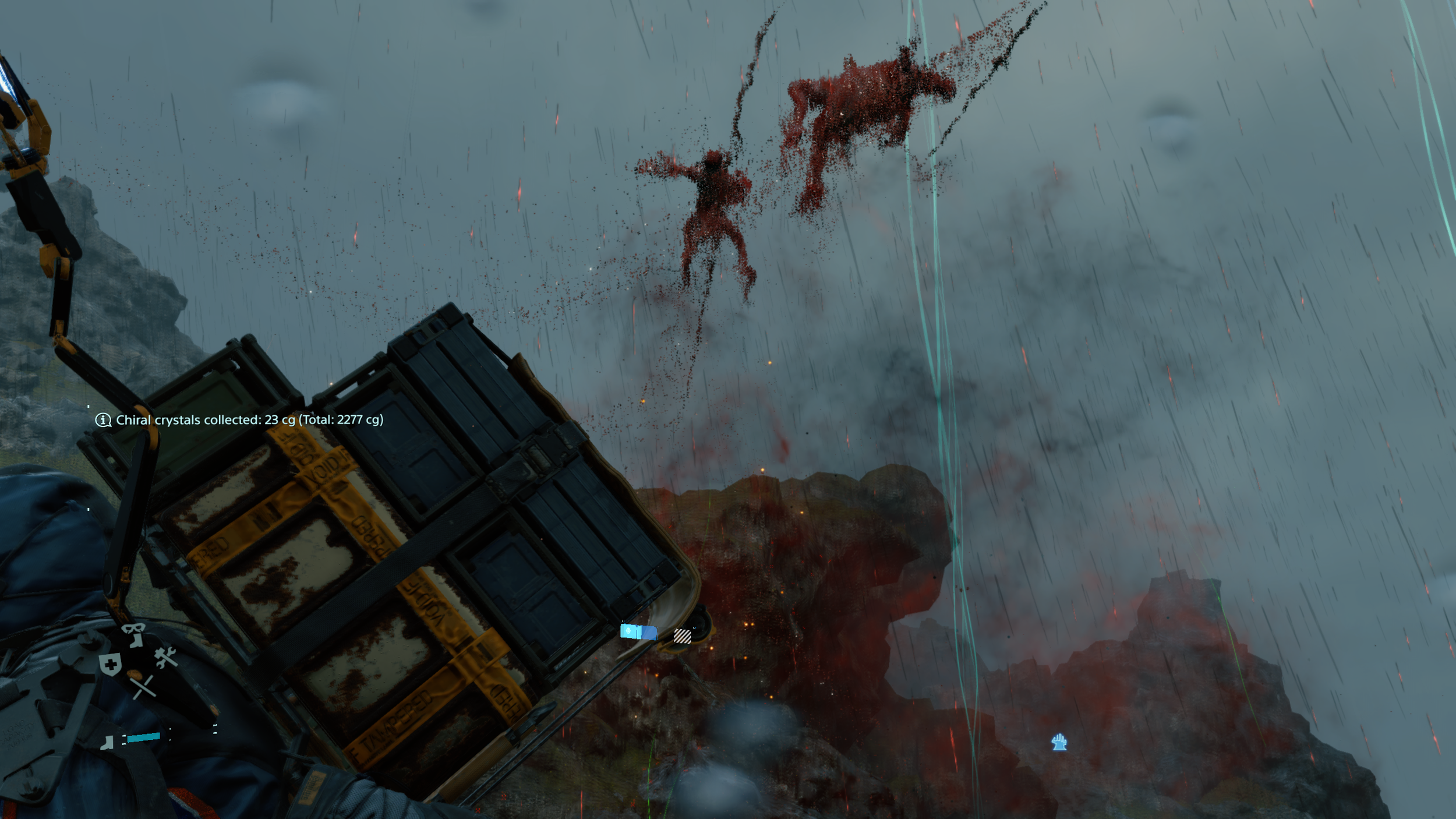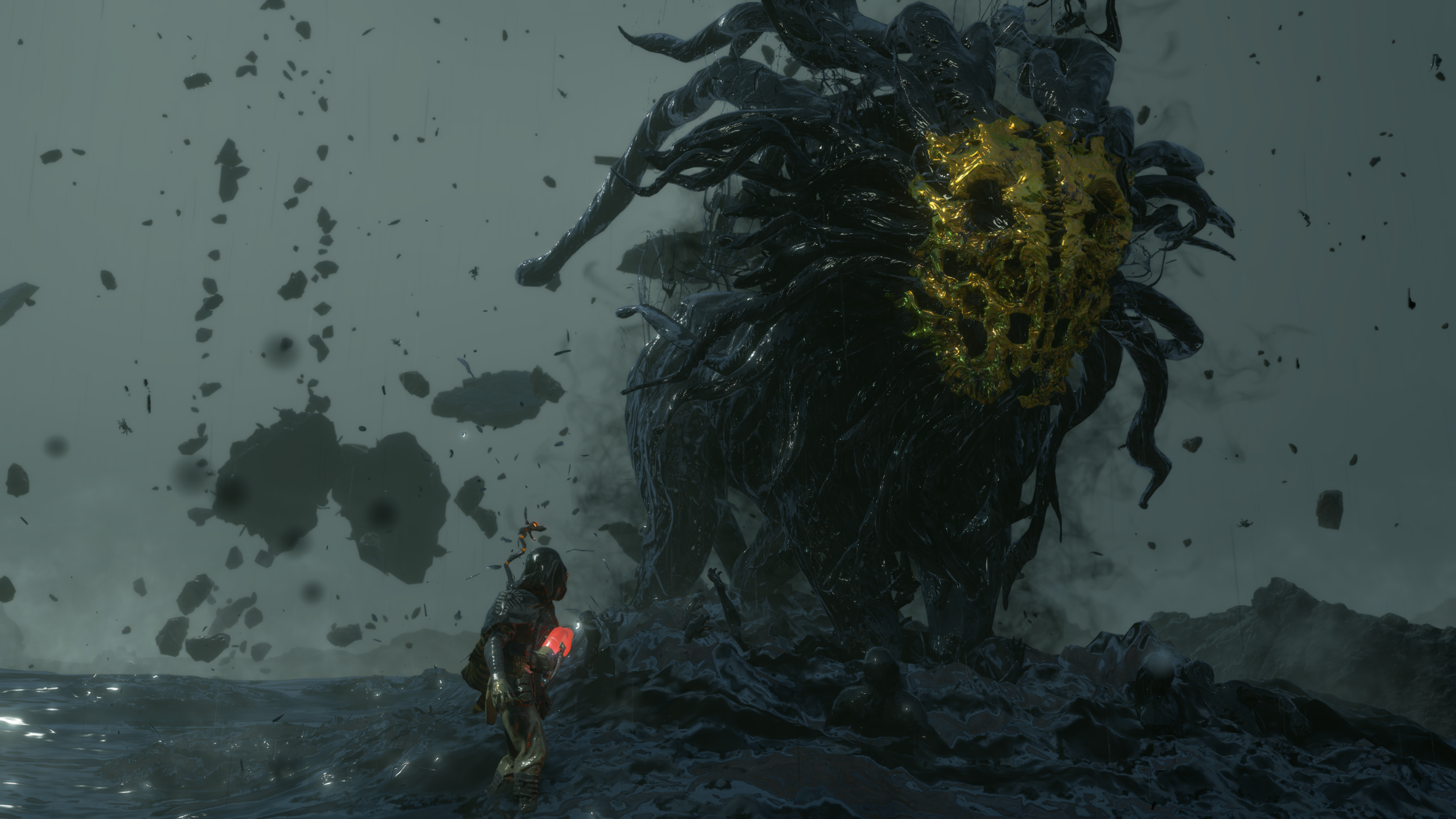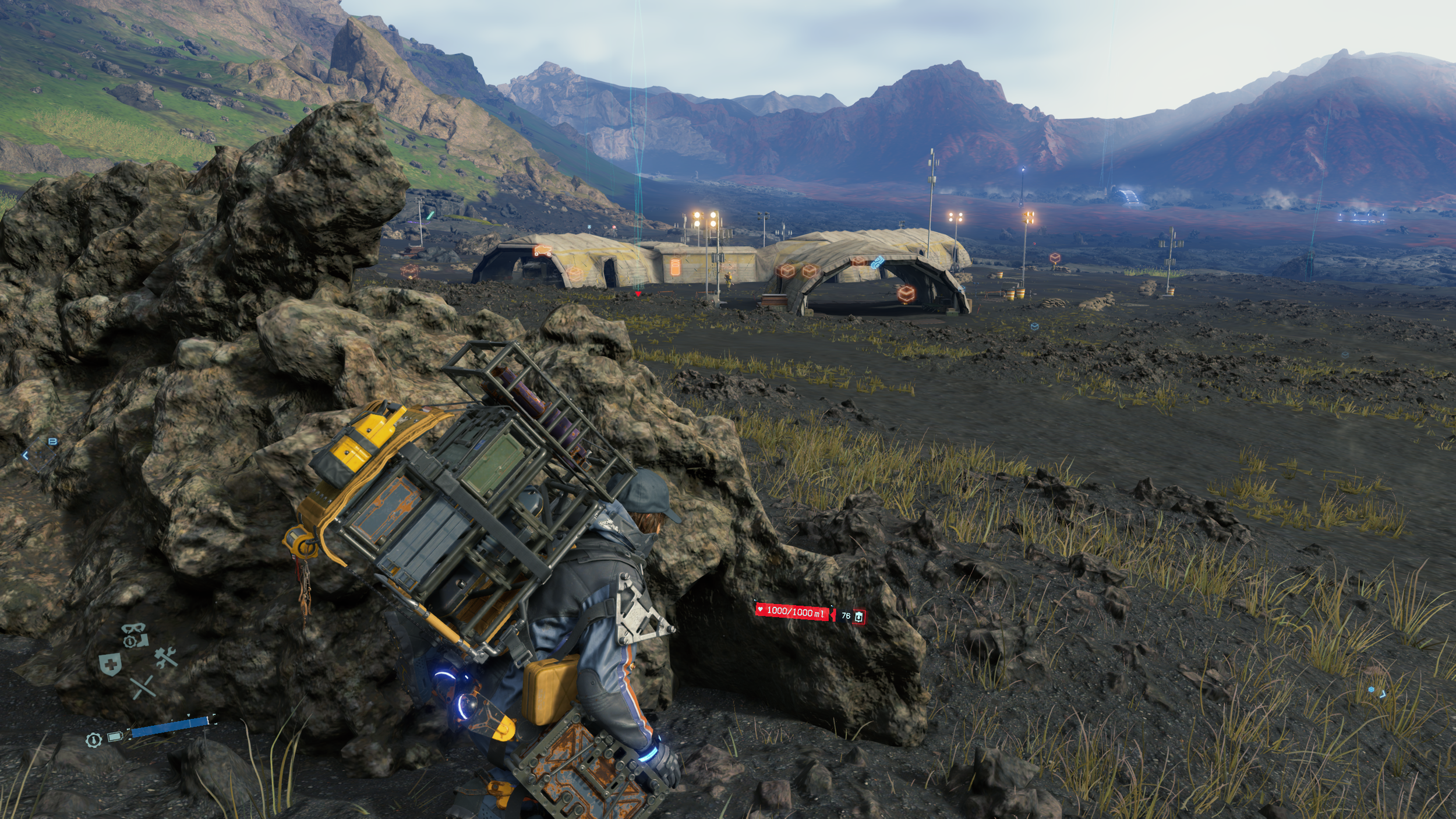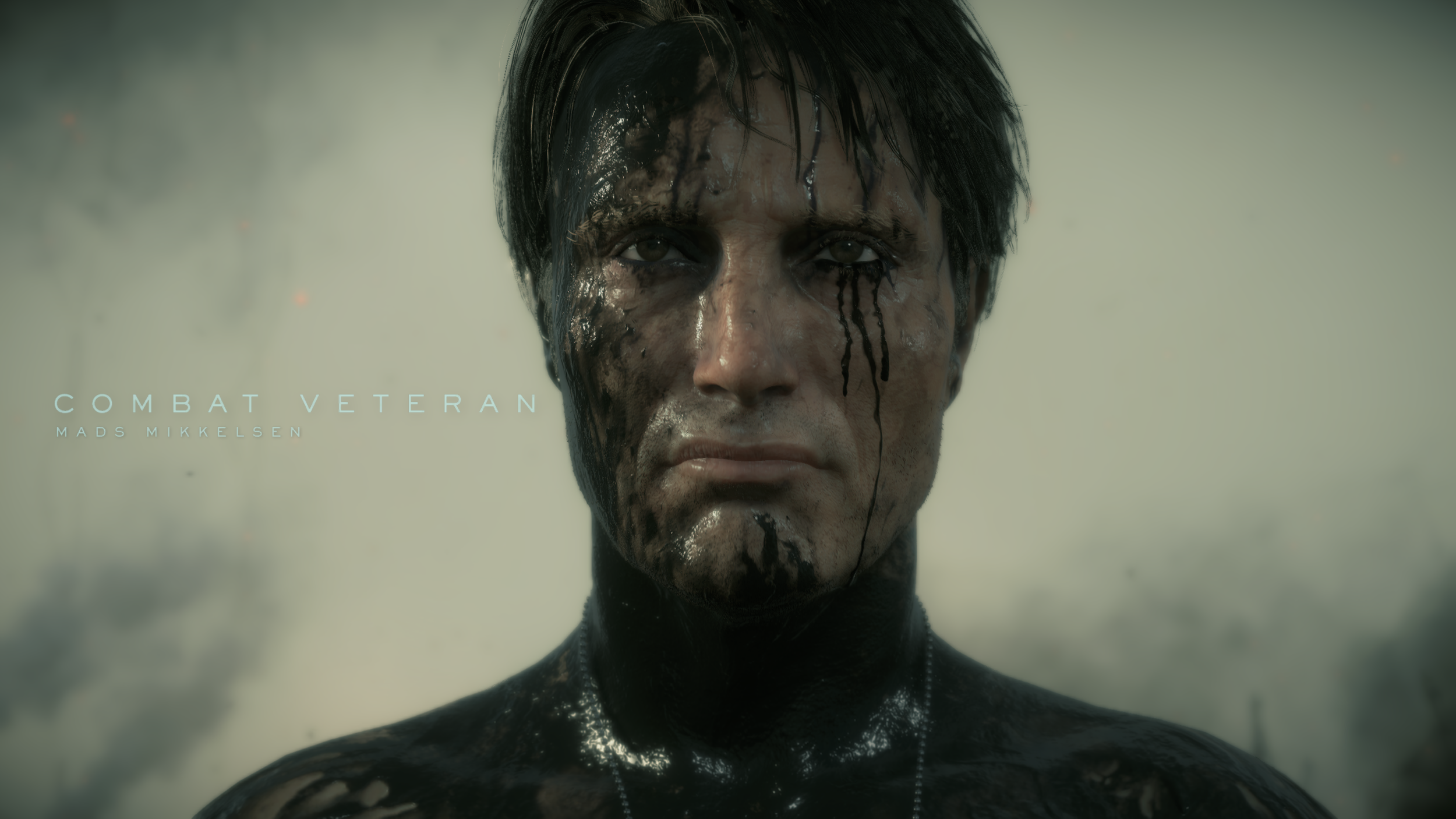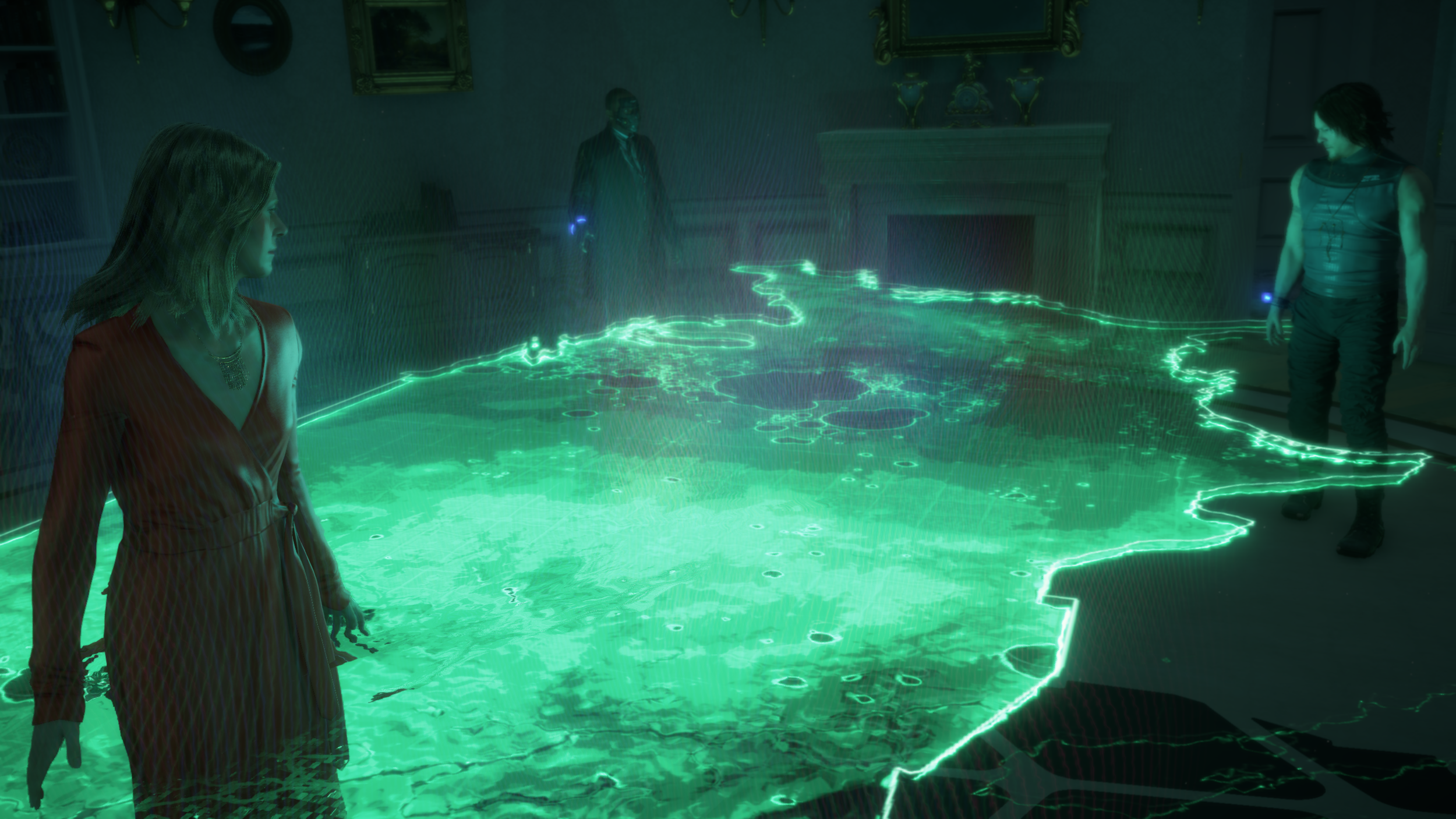When Death Stranding released on PS4 last year it was fascinating to watch the gaming media wrestle with what had landed at their feet. It was soon announced that a PC version was planned for the following year, so with much restraint I waited. I have now been playing the PC version for over two weeks and have been completely absorbed by this game. If you just want me to sound off on the port itself, thanks to the Decima engine, Death Stranding runs like a dream on PC. However, I am now convinced that to fully appreciate what Death Stranding is, you have to also look at the path its creator took to get here. So please indulge me as I take a slight detour before we get on with the main event.
It was in or around 1998 that I was renting a house with a friend, finally liberated from parental constraints with all the fun that comes with that freedom. Aside from a roaring coal fireplace, one of my best memories of this time was watching my friend play Metal Gear Solid on his PlayStation. I was drawn to the radical stealth mechanics, quirky design and yet not once did I consider who had made this influential title that would become a benchmark in stealth action games. It wasn’t until 2014 that a Metal Gear Solid game would grab my attention once again.
I think it would be fair to say that I became a little bit obsessed with Ground Zeroes, the modestly sized prelude to Metal Gear Solid 5: The Phantom Pain. There were so many clever details, fascinating gameplay mechanics and the new Fox Engine gave a satisfying weight to everything. The theme to Ground Zeroes was infiltrating the same island through numerous missions, each time with different conditions and objectives. As I played I was also reading more and more about the games Creator, Hideo Kojima. I think it was when I discovered the hidden message to gamers from Kojima that it really struck a chord, it seemed like he knew his time was coming to an end at Konami. My admiration for Kojima was only matched by my sadness that he had clearly not been permitted the time to finish the project, with the final act missing entirely. When Kojima split from Konami I, like so many fans, knew that this was probably the last time we would see Solid Snake. However, I was also relieved that Kojima had seemingly escaped the tethers of rapidly changing Konami and was now unfettered in his craft.
Kojima Unchained
When Konami stripped Hideo Kojima's name from the series he has spent his life creating, I think they secured their place among gamers as the most despised publishers in the business. They even prevented Hideo picking up an award, which had to be collected by Kiefer Sutherland (who played Snake in The Phantom Pain). The legendary creator was now free but also adrift, with little in terms of assets or equipment. However, his many contacts and friends rallied around him, getting him back on his feet and this gives you a sense of how well regarded he is by people who he has worked with. When Kojima did leave Konami and gained financial backing from Sony, I like to imagine the scene out of Fight Club when Tyler Durden screws over his boss: he now had corporate sponsorship.
Kojima moved so fast he was like a coiled spring that had been waiting for this exact moment. In a ridiculously short amount of time he had secured the Decima engine from Guerrilla Games and started work in earnest on his new project. At E3 2016 Hideo stood before the gaming world and unveiled Death Stranding, claiming it was actually a new genre of game entirely. The second we saw Norman Reedus the crowd exploded, it was one of those awesome moments when gamers everywhere are unified and it makes me smile even now. It was especially poignant because thanks to Konami, we had already been denied a game with Norman Reedus due to the ill fated Silent Hill reboot. As the reveal trailer closed you could (understandably) hear many people excitedly shouting “what the fuck is this?!” Indeed the answer to that question was the subject of much speculation over the next few years.
A World Divided
So the underlying theme of Death Stranding is making connections or strands as Kojima prefers to call them. In this bleak future human civilisation has been culled to a mere ebb by a catastrophic event. Now the plane of the dead bleeds into the world of the living and vice-versa. When a human dies they become a ticking time bomb and after a number of hours they will explode with enough force to level an entire city. You play the game as Sam ‘Porter’ Bridges, (Norman Reedus) a futuristic delivery man of sorts who is well known as one of the best in the business. Sam is also known as a Doom, which means he can sense the deadly BTs (beached things) that now cover the desolate landscape, but more on those later. Additionally Sam carries the title of Repatriate which means if (or when) he dies he has the ability to come back, effectively making him immortal.
When you start the game the Chrial Network (this world's version of the internet) is offline with most people now living isolated and alone in underground bunkers. With substantial portions of the road network and infrastructure being destroyed by voidouts (exploding dead people), it is now down to porters to deliver essential items around the country. I won’t spoil the intricacies of the plot but it is now your mission to make it across the United States and reconnect this divided nation. You do this in the most literal sense by activating parts of the Chiral Network as you head west, each ‘knot’ acting as the next link in the chain. It is beyond irony how much this idea now relates to our present world situation.
In the last few years I have watched my own county be consumed by Brexit and it saddens me greatly to see my nation cut itself off from the rest of Europe in this way. I have also been following the catastrophe that is the Trump presidency as he corrupts and divides his nation with startling efficiency. I do harbour a hope that this populist movement will someday be a cautionary tale in our history and the damage inflicted on society can be healed. It is the idea of rebirth that runs through the core of Death Stranding and one of the main driving forces that inspired Kojima to make a game about reconnecting a broken and divided world. To show that we are always stronger as one (in spite of our differences) and as a species our greatest achievements have been accomplished by working together.
Ghosts in the Machine
Where Death Standing gets very interesting is when you start to bring sections of the country back online, because at this point you start to see signs of activity from other players in your game world. You will never directly see another player but items they leave behind such as ladders, ropes and vehicles can be used by you. Larger structures such as bridges, roads and shelters can also be built and again, if you are connected to the network other people can see these. I’m not exactly sure how they work this out, because of course, you don’t literally see every player built structure in that area. I suspect this runs on a server system and when playing you will be bunched with a group of others.
As you do happen across these items you can see the players name and you can also drop a like (or many likes). In practice this is not as contrived as it sounds and feeds directly into the games central ethos, people working together to overcome obstacles they cannot best on their own. I remember after getting to chapter three logging back on after building the first section of a new highway, only to find others had progressed it way into the horizon. This system also works for you because items that you create can also be liked, so if you drop a particularly useful ladder or a bridge you will receive positive feedback every time you log back in. Likes are also gained from other sources, such as doing well in delivery missions, reading emails and even pulling funny faces in the mirror to BB’s amusement.
Ah yes, I should probably mention at this point that Sam is equipped with a Bridge Baby (BB for short) which allows him to better see BT’s. This concept has the most potential to upset people because not only are the babies imprisoned within these small pods for the duration of their short lives, but they are also seen as ‘equipment’ by Sam’s employers. At the start of the game this particular BB ‘malfunctions’ but ends up in your care and Sam quickly forms an emotional bond with the little tyke. Your BB is always with you and while he doesn’t need feeding or changing, you will have to comfort him when you’ve been in combat or suffered a nasty fall.
The Devil and the Details
One of the most incredible things about Hideo Kojima is his creative mind and how he is not afraid to try new ideas. This guy once made a game about vampire hunters that could only be played in the sunlight due to a photosensitive strip on the cartridge. We see this same playfulness in Phantom Pain, with the Fulton being able to airlift/steal pretty much anything (including sheep and enemy soldiers) or the hilarious cardboard box shenanigans. If you tranquillised an enemy soldier and they went face down into a puddle, they would drown. Even just watching Snake shift around in the helicopter as you set the missions up you realise that Kojima doesn’t just make the necessary parts of a game but builds a world that surprises and cultivates your imagination.
We see this same approach in Death Stranding and the best example of this is the private rooms where you can rest when inside larger bases. Resting here will refill your blood supply, stamina and BB’s happiness levels. These rooms [and Norman Redus) have been captured with so much photo realism it’s uncanny. Many times in production Norman was sat waiting and he would scratch his face or tap his feet, Kojima would immediately get him to repeat this action and that is why we see so many ‘Normanisms’ in the game. There are plenty of functional parts to the room such as being able to check emails, play music you've unlocked or check your gear. As a Doom your bodily fluids such as urine and shower water can be gathered to create weapons against BT’s. Even your crap can be used to make special hand grenades that kill BT’s, because of course it can.
Out in the game world this attention to detail is also on show with subtleties that you could miss if you blink. If you walk through a doorway that is too low your packages get knocked off at the exact point they connect with the arch. The behaviour of both Sam and his BB can also surprise you when you least expect it, from Sam whistling BBs theme tune in the rain to BB swimming when Sam is bathing in outdoor springs. Like with Rockstar games, it shows real dedication to add these minutia when you know most players will just pass them oblivious. However for those who like to look closer, they are rewarded with so many clever details it gives you an awesome feeling that this world goes beyond simple level design. The world just feels so solid and real, the paint on vehicles shows varying degrees of stress, individual raindrops tear down your equipment and even other porters can be seen going about their deliveries.
Maybe it is indicative of just how many people have rallied around Kojima in these difficult few years but the amount of folk he has scanned into the game is vast. In the opening area Jeff Keighley is one of the NPCs you can visit and connect with. Incidentally Jeff was so appalled at Konami denying Kojima his award, a year later he made sure he had his moment on stage. Other guest appearances include Conan O’Brien and Jordan Vogt-Roberts who is set to direct the Metal Gear Solid movie. Hell you can even see references to Horizon Zero Dawn in there which is no doubt Kojima’s way of thanking Guerrilla Games for the use of the Decima Engine.
Enlightenment through Adversity
Combat has been the biggest stick for gaming since day dot, however not every game is about killing. In fact these days we see many well established series focus on other engaging systems like with the Sims or titles like Snow Runner. Maybe it was because Kojima is so well known for action/stealth games that people were expecting something similar with Death Stranding. I’ve seen many reviews lament the lack of a combat focus but I think that is missing the point. If you chop away all the story and exposition, you are essentially a delivery man and that is just not going to fly with some gamers. However, it is the way this game is delivered (I’m not even sorry) that is key, with many systems that require a degree of planning. Every piece of equipment you take will reduce your precious weight threshold so you need to check things like the terrain and weather patterns.
The sheer amount of cargo Sam can load onto his back has become a meme in of itself, it’s ridiculous and yet I don’t find myself at all bothered by it. This is Kojima’s style, to give us hyper realism but to never lose the playful mindset that makes gaming so much fun. How you stack your inventory will also require some consideration, such as keeping some items dry or in the case of pizza keeping the box flat! It is about using the information and equipment at your disposal to get the job done. I found that once I’d mastered how these systems bounced off each other, you enter an almost Zen like state of mind: it really becomes addictive.
As you progress through the game Sam will gain access to new items or better versions of his current equipment. Once you get your teeth into chapter three there is actually a surprising amount of new toys to play with such as floating carts to carry cargo or better weapons to deal with BTs. Vehicles are also more accessible either from being left by other players or ones you have printed off yourself. Just don’t think all your problems are solved once you get a set of wheels because if the harsh terrain doesn’t finish you off a swarm of BTs can have you calling out the RAC in no time. I absolutely love the design of the vehicles in Death Stranding, especially the trikes that thunder around at high speed. Unfortunately these wannabe Bat Pods handle like a tranquilised bull unless you are on flat ground or tarmac. If you do attempt to jump over rivers or canyons you will invariably crash or ricochet around like the engine doesn’t quite know where to put you. The trucks fare a lot better and with a bit of patience will navigate terrain adequately.
Beach Boys
The first time I heard BTs were the main adversaries in Death Stranding I mused how the British Telecommunications company had been led astray so badly. Thankfully I have now discovered that BT stands for ‘Beached Thing’, lost souls that hang between our two worlds waiting to snare any living thing they detect. You will encounter them many times on your travels and the best course of action is usually to quietly pick your way through. When connected to your BB the Odradek on your shoulder can temporarily reveal the location of a BT allowing you to avoid them, sometimes holding your breath when they get a little too close.
If you do drop a bollock and get detected, you will quickly get swamped by an oily liquid that is itself full of BT’s dragging you away to the other side. In Sam’s case he is given the chance to fight a far larger BT (which look amazing) with hemonic grenades and other means I won’t spoil. These fights can be a little frustrating but overall come across very well with architecture rising through the oil to allow you to keep safe. I also love that if you have been caught off guard with little supplies, a representation of other players will appear and start throwing your equipment. As the game advances you must also face off against a number of larger boss encounters which can be truly spectacular.
Return to Sender
So spectral entities that will suck you into the afterlife are not the only things that Sam must be wary of. Mules are a group of ex-porters who have lost their marbles and become a menace to anyone passing through their territory . In each area you will encounter Mule camps that while contain resources and will also be paroled by these cargo stealing fiends. If you wander within range of a Mule camp you can get pinged by a scanner and if you are carrying cargo with a tag, they will come running. If you keep to the long grass it is possible to pick them off one by one with your rope. However once spotted you must either run for the hills or start clobbering them into unconsciousness. As you progress through the chapters you will gain more equipment to deal with Mules, such as the nonlethal Bola gun or smoke decoys. I may or may not have accidentally run a few over while liberating a Mule truck.
These encounters do lead to some pretty tense moments, dodging the electrified javelins they throw and cursing them as they knock those fragile china plates off your back for Aunt Marge. Even though I am not bothered by the lack of offensive options in combat, I do wish the stealth had been worked on a little. A way of distracting people so you can sneak past would have been very much appreciated, especially because these guys have eyes like a shit house rat.
Kinetic Locomotion
I’ve seen many comments that Death Stranding is merely a walking simulator and I find this summary unfairly reductive: it’s like calling GTA 5 a driving simulator. It’s not that there isn’t a lot of walking to do in this game; there is. However it is all part of a greater challenge that if you approach it with the right mindset can be extremely rewarding. Like anyone who has been hiking in real life, you need to prepare, know your route and take the right equipment. It can be tough going on some bigger hikes and blisters are never fun. However, when you reach your goal and gaze down on the world below; there are few things in life more wonderful. I think this is where Death Stranding is at its best, when you are out in the world, soaking up the vistas and battling against the elements to reach your goal.
A vital aspect of the gameplay that had to be right was the way Sam connects to the terrain, for the most part they nailed it. I just love the way weight, inertia and momentum all play out on Sams walking. Each rock and variation in the ground is reflected as his feet tilt and adjust. There are one or two places where it is janky, so for example when dropping down from a height I would have preferred to see more give in Sam's legs. When you scan the world with the Odradek it will superimpose data onto your view, like an advanced type of augmented reality. Some terrain will be a cinch while others will send you reeling if you’re not careful. If you start running down a hill too fast you can almost see the panic in Sam's movements, or when you are scrambling up a forty five degree slope he will use his hands. The animation and the way it has been fused into gameplay is wonderful. There are many other environment challenges you must face, such as avoiding deep water, navigating snow or climbing sheer rock faces.

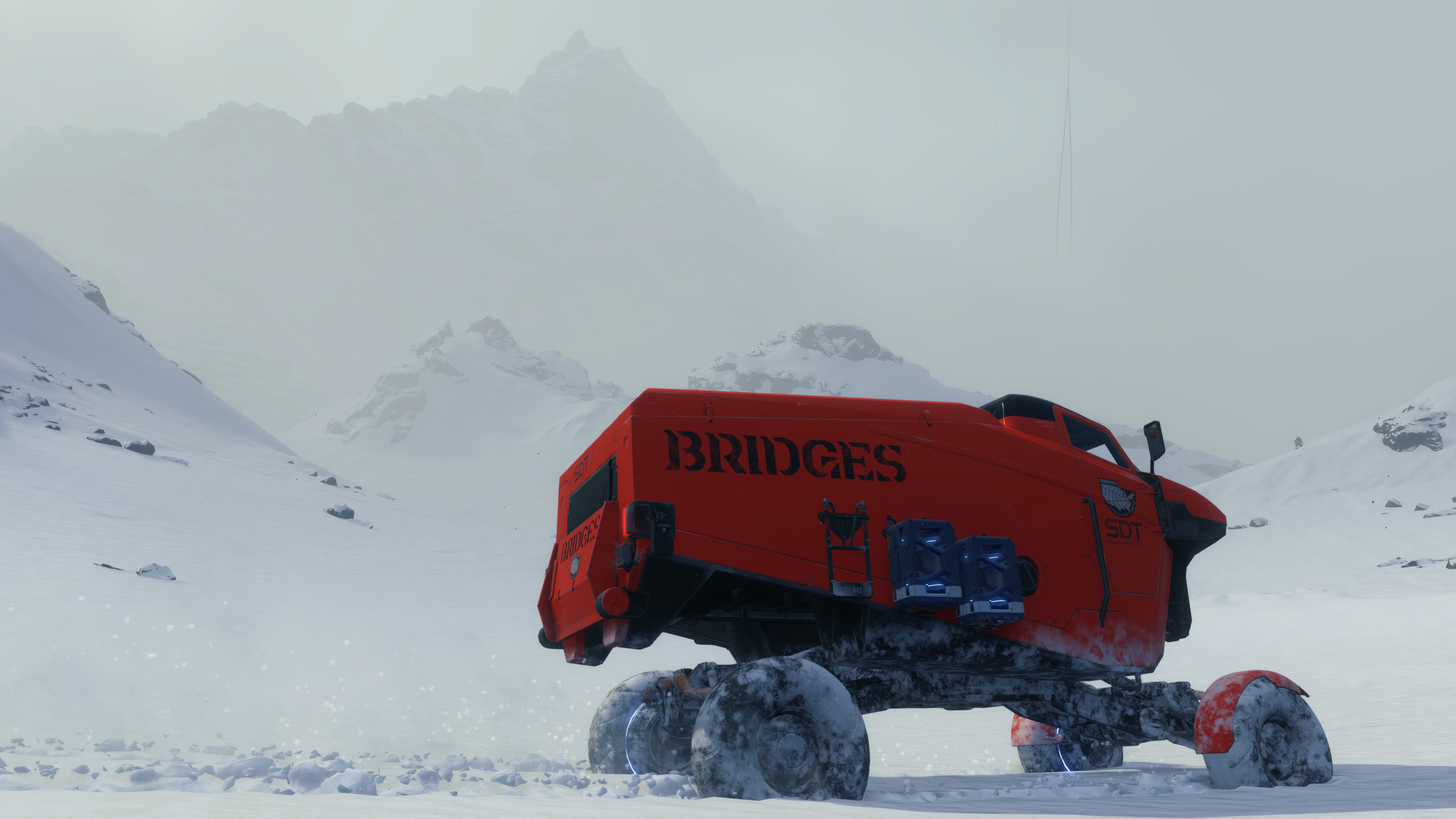
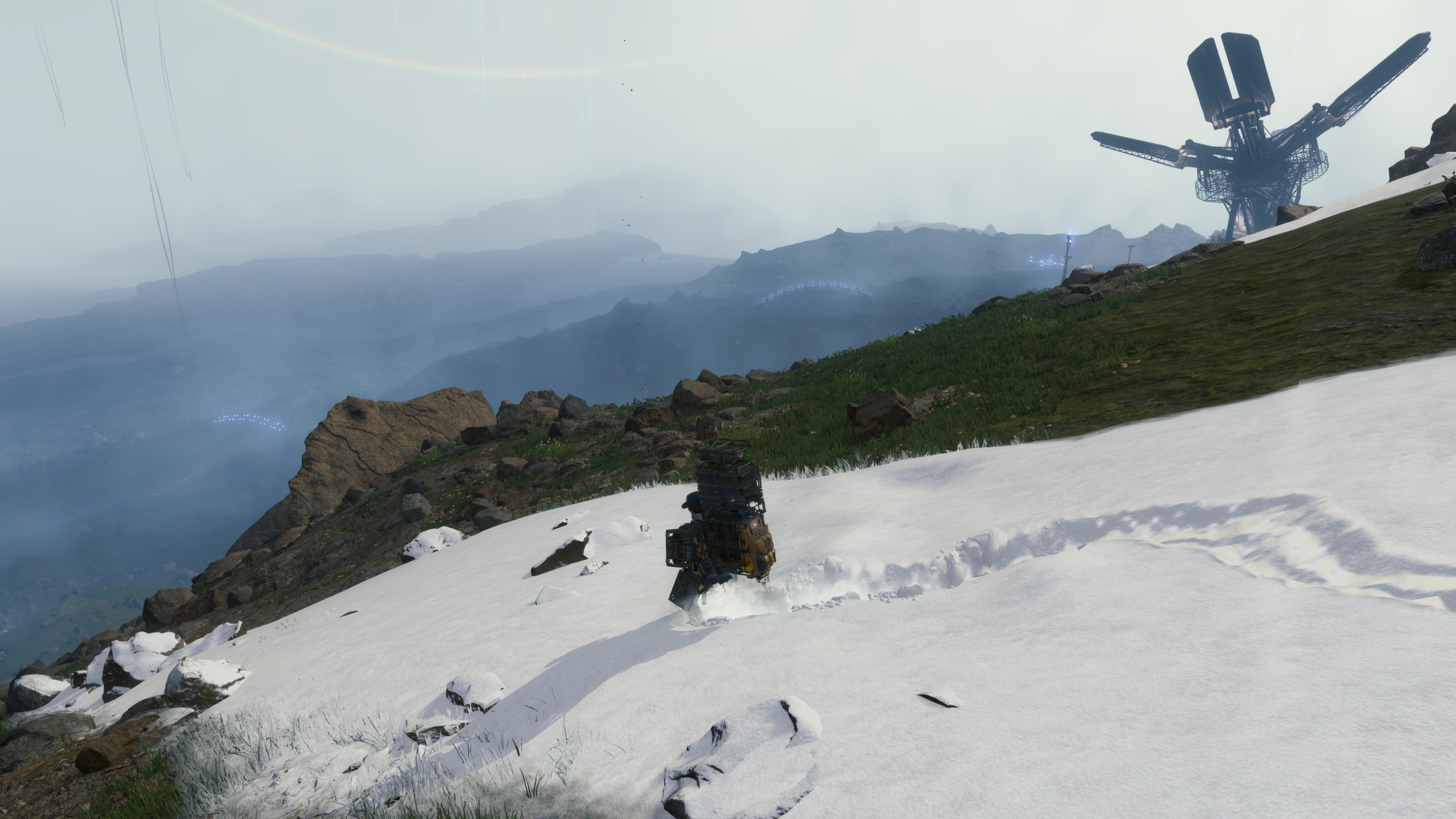
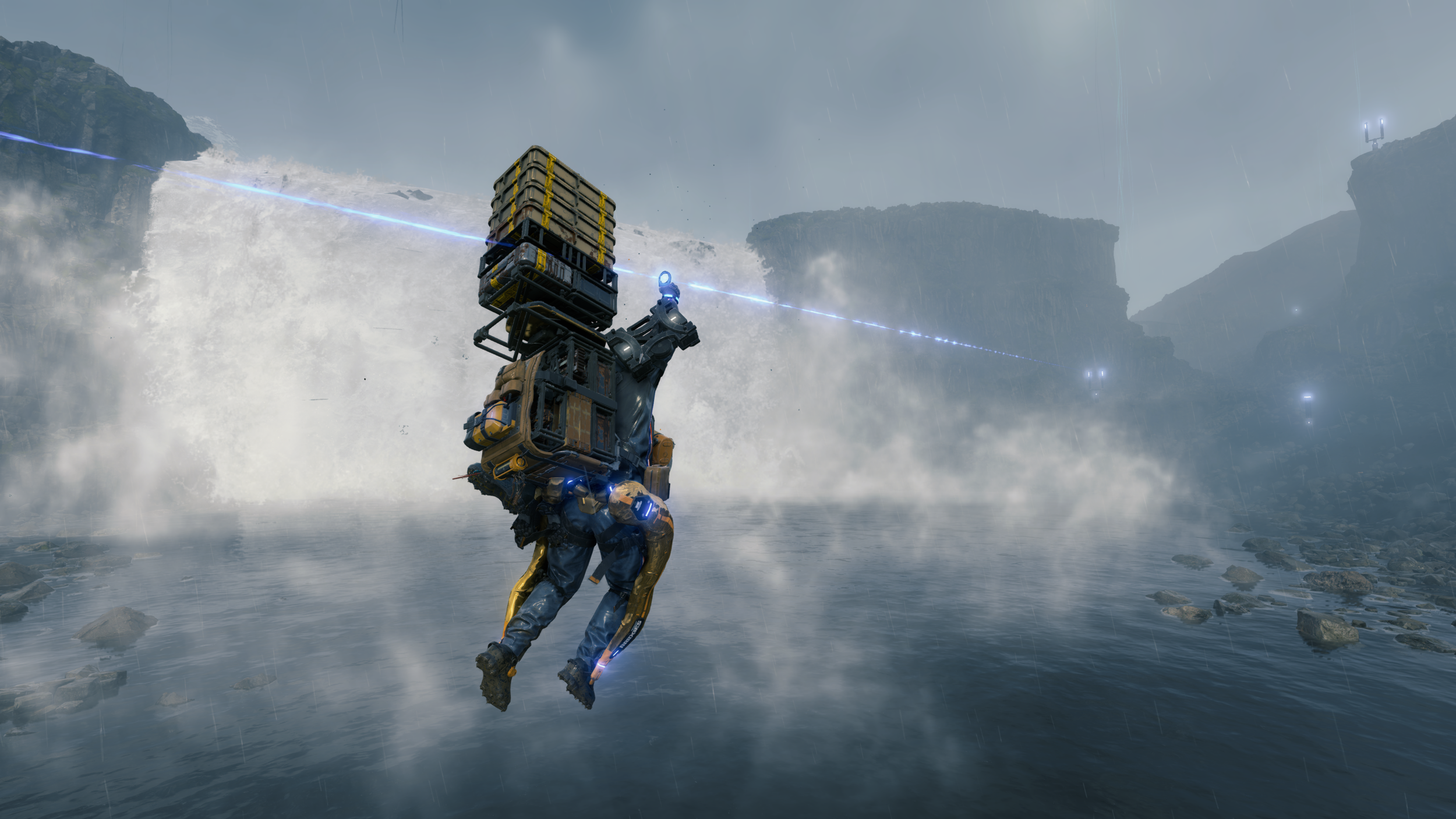
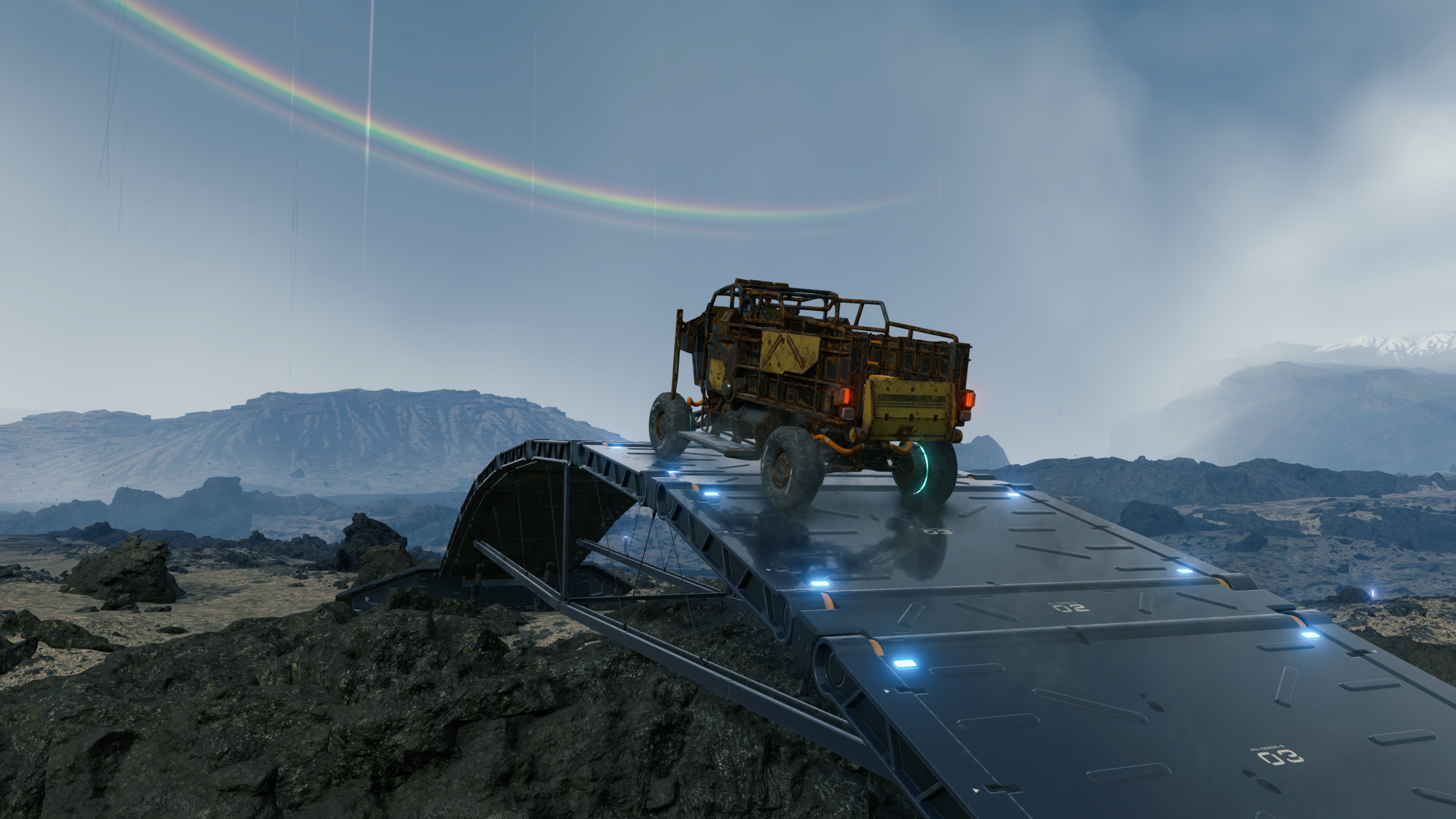
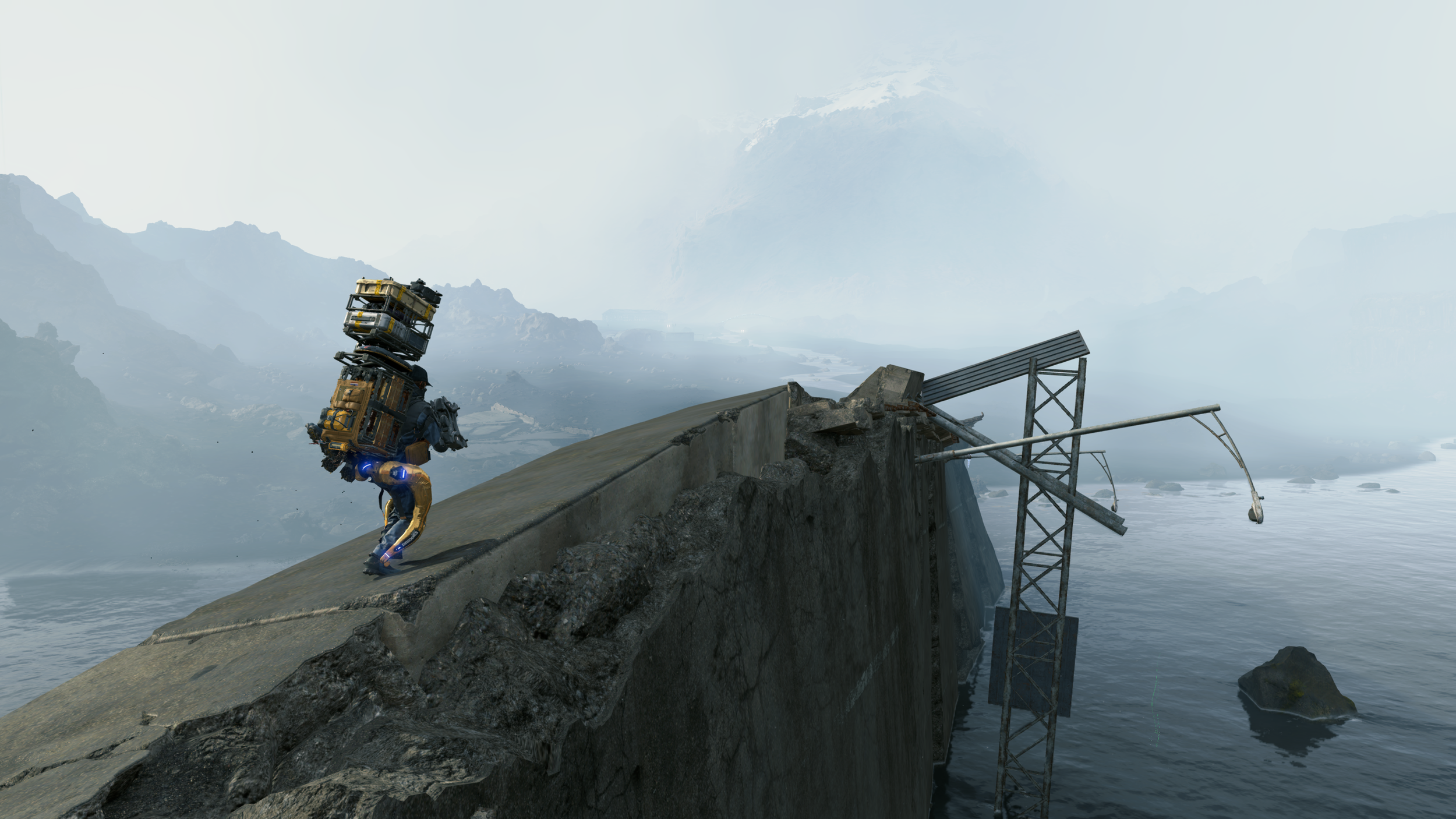
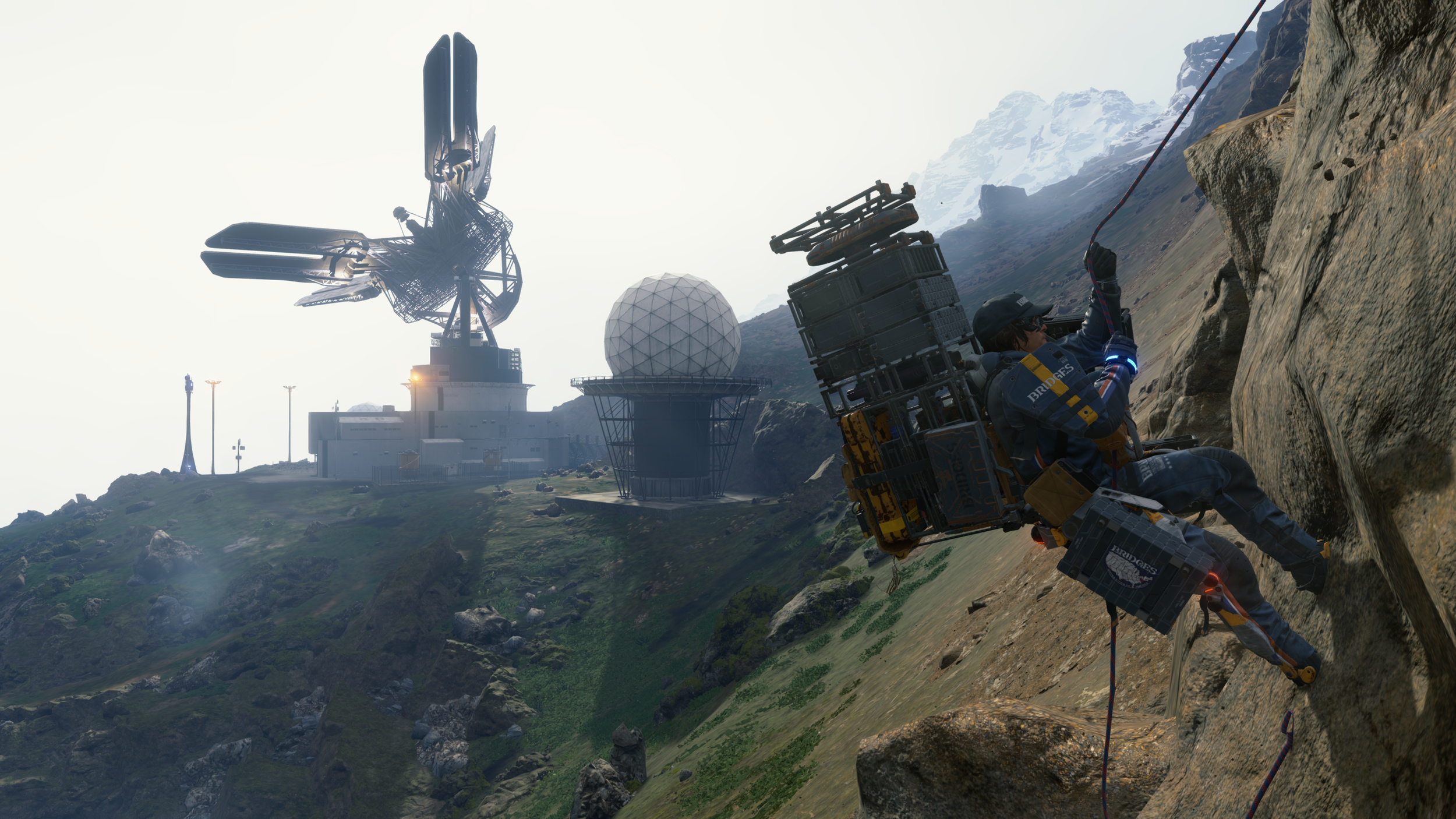
Movies and Games, sitting in a Tree..
It’s interesting that Kojima has said his company will now start looking at making films as well as computer games. This is because he thinks due to the proliferation of streaming services, gaming and film will increasingly occupy the same devices in our lives. For those you like to delve into the lore behind a game world, there is a lot of extra content at your fingertips in the form of emails and other media. While I wouldn’t say this extra content is essential, many aspects of the game will become clearer if you do a bit of reading as you unlock new information. There are also a few other nice additions such as an item hunt for some Half Life themed swag which can then be equipped by Sam in the game. I for one, never saw myself delivering packages with a red valve sticking out of my head and donning a set of Gordon Freeman glasses.
Of course with any Kojima game there is an elaborate story to be told that is delivered in many forms. The CGI content in this game is the best I’ve ever seen, capturing many of these well known actors in all their glory. The first time you meet Mama in chapter five for example, the way they have captured human expressions with facial capture techniques is truly next generation. It is this exquisite detail that helps actors get across the raw emotion of each moment. With some of the lesser known bunker dwellers this quality does tail off somewhat but is still excellent. I have always found it interesting how Kojima names the people in his stories quite literally, Quiet and Skull Face from Metal Gear Solid 5 for example. Here we see the same thing with characters like Die-Hard Man, Fragile and Mama living upto their names.
Is it PC?
One of my biggest critisims for The Phantom Pain was that the spaces around each combat area felt devoid of life, both in terms of human activity and wildlife. Maybe this was a result of the game being rushed to the finish, who knows. In Death Standing we see the same (almost) lifeless open spaces that really drive home the loneliness of being a Porter. However, in Death Stranding I feel like it actually works to enhance the games atmosphere and certainly fits with the events of the cataclysm. Smaller creatures like birds and butterflies would surely be able to avoid the BT’s but larger animals have been dragged away long ago or devastated by Timefall. The point is though these desolate landscapes are jaw dropping in their beauty. Impossibly high mountains tower ahead of you, unique rock formations jut from the horizon and there is a surprising amount of diversity. It didn't hurt that this is the first game we have been playing on a brand new GPU and a shiny new monitor, running at 1440p, HDR and all the trimmings. You can see each individual rock and blade of grass as Sam trundles past. There are also plenty of PC specific visuals options such as extended draw distance, ultra wide support and unlimited framerate.
One aspect of the game that didn't go as I had anticipated was the control method. Given this is a game full of menus, maps and inventory management you’d think I would have opted for the good old mouse and keyboard. However, due to the nature of Sam's locomotion, I am actually going to recommend a good controller for this one. It is possible to do a perfectly good job with mouse and keyboard but analogue sticks are king when keeping Sam from face planting into the ground. The vibrations of the controller are a good early warning when your load is starting to tilt left or right. I will say that the menus while technically working well do overstay their welcome with far too many button presses required for each drop off. Thankfully you can skip the various components which makes this far less of an issue.
The sound design in Death Stranding is sublime with a wonderfully rich and varied set of sound effects. From the patter of rain on your hood to the gurgling of BB when content. The game does a very good job of letting the player know what is happening out of your view whether it’s Mules detecting you, BT’s ahead or Timefall from above. Norman Reedus is so at home as Sam because he is similar to Daryl Dixon in many ways, initially pushing people away but also sincere and fierce when provoked. As for music, again Kojima has really nailed this with a collection of tracks that mesh with the gameworld perfectly. A good example of this is the opening scene when you first take control of Sam and must walk down from the hills.
Conclusion
The very first computer games were, by their very nature, new and innovative. As more games were released they pooled into the genres we have today. Often this evolution would be dictated by the constraints of technology at that time. Sideways scrollers, top down shooters, text based adventures: they could all be fun but also had to work within limitations. We are now fast approaching the point where games are no longer governed by these restraints and so why do we still see the same well worn design choices taken? The truth is that innovation is risky and that doesn’t sit well with the bean counters. Yet there are developers out there who still hold innovation up as the defining motivation to create something new. No matter whether Death Stranding is a game you care for or not, there is no denying that there is nothing else quite like it.
In the real world so many of us watch in horror as our leaders fail to act with integrity and basic respect for human life. In a world this broken, why wouldn’t you make a game that acts as the very antithesis of division and hatred of your fellow human. Facing the adversity in his own life Kojima eventually triumphed and is here to tell the story. Do the origins of Death Stranding make it less legitimate as a game? For me, absolutely not because it also stands up on its own merits and in many ways is enhanced by the path of its creator. The game world is mesmerisingly beautiful and lavished in a level of detail we have never seen before. More importantly it has a deep and satisfying gameplay loop, but requires a certain degree of tenacity to see it through. This is not a game for everyone, but with that said I would urge everyone to give it a shot: you might be surprised what you discover.
Thank you for reading my review of Death Stranding on PC. I hope you enjoyed reading it as must as I enjoyed putting it together. If you like my content please follow me @riggedforepic for all my content updates.
